
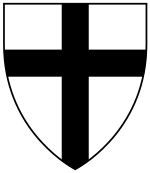

The Leaders of the early Teutonic Brotherhood
- 1190-1198
The Teutonic Order as a hospice brotherhood in Outremer:
- 1190................Meister Sibrand
- 1192.............................
Gerhard
- 1193/94 .............Heinrich, prior
- 1195-1196.........................Ulrich
- 1196............................Heinrich



The Grand Masters of the Teutonic Order - 1198-1525
The Teutonic Order as a spiritual military
order had a total of 37 grand masters between 1198 and 1525. Several
armorials of the 15th and early 16th century depict the coat of arms of the grand masters. These include the Chronica
by Ulrich Richenthal, an armorial of St. Gallen kept in Nuremberg, an armorial of southwest Germany kept in Leipzig and the
Miltenberg armorial. Conspicuously absent from these lists are three grand masters, Gerhards von Malberg (1241-1244) and
his successors Heinrich von Hohenlohe (1244-1249) and Gunther von Wüllersleben (1250-1252), so that pre-modern historiographical
tradition has a list of 34 grand masters for the time before 1525 (as opposed to 37 in modern accounts).
The Teutonic Order as a Spiritual Military
Order:
- 1198-1200 ..............................Heinrich
Walpot von Bassenheim
- 1200-1208..........................................................
Otto von Kerpen
- 1208-1209....................................................
Heinrich von Tunna
- 1209-1239.....................................................
Hermann von Salza
- 1239-1240.................................................
Konrad von Thüringen
- 1240-1244...................................................
Gerhard von Malberg
- 1244-1249...............................................
Heinrich von Hohenlohe
- 1249-1252...........................................
Günther von Wüllersleben
- 1252-1256........................................................
Poppo von Osterna
- 1256-1273..............................................
Anno von Sangershausen
- 1273-1282...........................................
Hartmann von Heldrungen
- 1282 or 1283 -1290...............................
Burchard von Schwanden
- 1290-....................................................Konrad
von Feuchtwangen
- 1297-1303...............................................
Gottfried von Hohenlohe
- 1303-1311.........................................
Siegfried von Feuchtwangen
- 1311-1324.................................................................
Karl von Trier
- 1324-1330........................................................
Werner von Orseln
- 1331-1335.............................................
Luther von Braunschweig
- 1335-1341.................................................
Dietrich von Altenburg
- 1342-1345..................................................................
Ludolf König
- 1345-1351..........................................................
Heinrich Dusemer
- 1351-1382...................................................
Winrich von Kniprode
- 1382-...........................................Conrad
Zöllner von Rothenstein
- 1391-1393................................................
Konrad von Wallenrode
- 1393-1407..................................................
Konrad von Jungingen
- 1407-1410....................................................
Ulrich von Jungingen
- 1410-1413......................................................Heinrich
von Plauen
- 1414-1422........................... Michael Küchmeister
von Sternberg
- 1422-1441..........................................................
Paul von Rusdorf
- 1441-1449..........................................
Konrad von Erlichshausen
- 1449 or 1450-1467.............................
Ludwig von Erlichshausen
- 1467-1470...........................................
Heinrich Reuß von Plauen
- 1470-1477.................................
Heinrich Reffle von Richtenberg
- 1477-1489..............................
Martin Truchseß von Wetzhausen
- 1489-1497........................................................
Johann von Tiefen
- 1497-1510.....................................................
Frederick of Saxony
- 1510-1525.................................
Albert of Brandenburg-Ansbach



The Grand Masters of the Chivalric Teutonic
Order
The
Chivalric Teutonic Order of Germany
Hoch-und Deutschmeisters - 1530-1929 again in 2002-
- 1527-1543................................................. Walter von Cronberg
- 1543-1566.................................................. Wolfgang Schutzbar
- 1566-1572....................................... Georg Hundt von Weckheim
- 1572-1590......................................... Heinrich von Bobenhausen
- 1590-1618............................................... Maximilian of Austria
- 1619-1624......................................................... Karl I of Austria
- 1625-1627................................ Johann Eustach von Westernach
- 1627-1641........................................ Johann Kaspar von Stadion
- 1641-1662......................... Archduke Leopold Wilhelm of Austria
- 1662-1664................................... Archduke Karl Josef of Austria
- 1664-1684................................... Johann Caspar von Ampringen
- 1685-1694.......................... Ludwig Anton of Palatinate-Neuburg
- 1694-1732........................... Ludwig Franz of Palatinate-Neuburg
- 1732-1761................................ Prince Clemens August of Bavaria
- 1761-1780.......................... Prince Charles Alexander of Lorraine
- 1780-1801....................... Archduke Maximilian Franz of Austria
- 1801-1804............................. Archduke Charles, Duke of Teschen
- 1804-1835.............................................. Anton Viktor of Austria
- 1835-1863......................................... Maximilian of Austria-Este
- 1863-1894.................................... Wilhelm Franz Karl of Austria
- 1894-1923................ Eugen Ferdinand Pius Bernhard of Austria
- 1923-1933.......................................................... Dr Norbert Klein
- 2002-Present....................... Prince Karl Friedrich of Germany

The Clerical Grand Masters of the Teutonic
Order
The
Clerical Religious Teutonic Order of Rome
- 1923-1933 .....................Dr Norbert Klein
- 1933-1936............................. Paul Heider
- 1936-1948
......................Robert Schälzky
- 1948-1970 .................. Dr Marian Tumler
- 1970-1988 ........................Ildefons
Pauler
- 1988-2000 ....Dr Arnold Othmar Wieland
- 2000-2018...................... Dr Bruno Platter
- 2018-Present........................Frank Bayard



The Teutonic Hospitallar Brotherhood
- 1190-1198
(1) Sibrand -
1190-1192
Master Sibrand
(Meister Sibrand, Magister Sibrandus) was the founder of the hospital in Akkon,
which was to become the nucleus of the Teutonic Knights. For this reason, he is sometimes
considered the "first grand master" of that order, even if it was only given recognition
in 1192, and transformed into a military order in 1198. Sibrand had travelled
to Outremer in 1188, in the Third Crusade of Frederick Barbarossa, as a follower of Adolf
III of Holstein. Sibrand is mentioned as the founder of that hospital in a document by king Guy of Lusignan dated to September
1190. The field hospital was operated for German troops during the siege of Akkon. Such a hospital had been set up and operated
by merchants of Bremen and Lübeck, near the cemetery of St. Nicholas, using a sail for shelter. After the conquest
of Akkon, Guy gave to Sibrand a house in the city, the Armenian hospital, where the German hospital found more permanent
quarters. After the fall of Acre in July
1191, the hospital was moved into the city and it evolves into the permanent base of the Teutonic Kings. With the help of
donations made by the faithful, was purchased a garden for hospital in front of the gate of St Nicolas.
(2) Gerard - 1192-1193/4
(3) Heinrich
- 1193/4-1195
(4) Ulrich
- 1195-1196
(5) Heinrich - 1196-1198



The Grand Masters of the Teutonic Order
The List of the Hochmeisters of the Teutonic Order
Liste der Obersten Leiter des
Deutschen Ordens

(1) Heinrich I Walpot
von Bassenheim - 1198-1200.
Heinrich
Walpot von Bassenheim (died 1200), also known as Henry Walpot, was the first Grand Master of the Teutonic Knights, serving
from 1198 to 1200. As little is known about him, information regarding the Grand Master is mostly based on historians' theories.
Walpot hailed from a rich family from Mainz. He was in favour of turning the organization into a military order. In 1199 he
received a copy of monastery rules from Gilbert Horal, the Grand Master of the Knights Templars, and on behalf of Pope Innocent
III. It was based on the rules of the Templars. Walpot died and was buried in Acre.
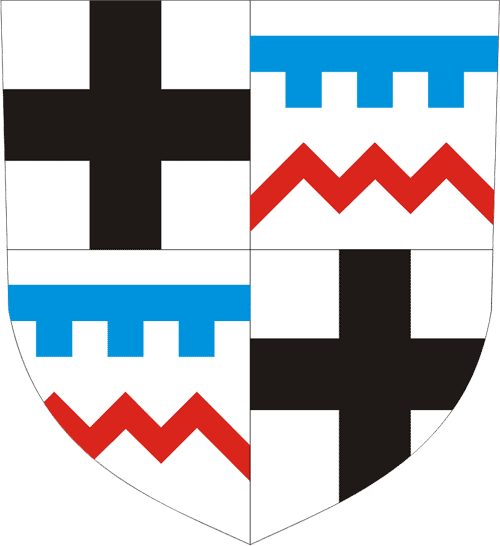
(2) Otto von Kerpen
- 1200-1208.
Otto von Kerpen (died 1208)
was the second Grand Master of the Teutonic Knights, from 1200 to 1208. Otto came from a poor Rhenish knightly family residing
in the castle of Kerpen in Kerpen, Rhineland-Palatinate. While Grand Master, he strove to make the Teutonic Knights independent
from the older military orders of the Knights Templars and the Knights Hospitaller. He died in 1208 and was buried in Acre.

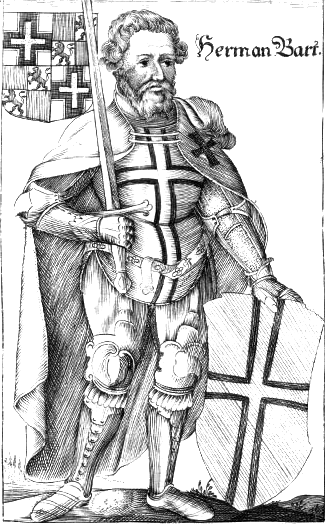

(3)
Heinrich II von Tunna - 1208-1209.
Heinrich
von Tunna, genannt Heinrich Bart (auch Herman Bart; † 2. Juni 1209), war der dritte
Hochmeister des Deutschen Ordens von 1208 bis 1209. Er war ein Ministerial des Landgrafen
Hermann I. von Thüringen, Pfalzgraf von Sachsen. Er gehörte vermutlich zur Familie
von Thüna. 1208 trat er eine Pilgerreise ins Heilige Land an. Zur Finanzierung der Reise überließ
er ein ihm als Eigentum gehörendes Waldstück auf dem Ettersberg dem Kloster Reinhardsbrunn und erhielt dafür
10 Mark Silber. In Palästina trat er in den Deutschen Orden ein und wurde noch im selben Jahr zum Hochmeister gewählt.
Die Ursachen seines schnellen Aufstiegs sind ungeklärt. Er starb bereits 1209 und wurde in Akkon begraben.



(4) Herman von Salz
- 1209-1239.
He was born to a ministerial
family from Thuringia, possibly around 1179. The precise time of his entry into the Order is unknown, but he first appears
in 1209 as Grand Master. As such he may have spent some time in the Mediterranean Sea region during the first year of his
rule. During this period the activities of the Knights were extended from Spain to Livonia. He was a friend and councillor
of Holy Roman Emperor Frederick II, for whom from 1222 onwards he represented as a mediator in the Papal curia. Pope Honorius
III also recognized Hermann's capabilities, and granted the Teutonic order an equal status with the Knights Hospitaller and
the Knights Templar, after it had gone into decline under previous Grand Masters. In 1211 he led an expedition against the
Cumans at the request of Andrew II of Hungary, but the Hungarian nobles complained of the order's presence and they were forced
to leave by 1225. Meanwhile, Hermann accompanied Frederick on the Fifth Crusade against Damietta in 1219, and he was decorated
for bravery by John of Brienne, the titular King of Jerusalem. Hermann later convinced Frederick to undertake the Sixth Crusade,
and was partially responsible for Frederick's marriage to Yolanda, John of Brienne's daughter. Upon his return to Europe he
helped to lift Frederick's excommunication. He was then requested by Conrad of Masovia to fight the pagan Prussians. In 1230
the knights began their lengthy campaign to Christianize the Prussians of the Baltic region. Hermann's subsequent visits with
the Pope or the emperor brought new privileges and donations to the order. He was also able to obtain the incorporation of
the Livonian Brothers of the Sword into the Teutonic order in 1237. The importance of Hermann's role as mediator between Pope
Gregory IX and the emperor can be seen by the fact that all communication between Frederick and the pope broke off with Hermann's
death. Within the Teutonic order, however, the knights began to grow dissatisfied at the absence of their Grand Master, so
they recalled him and had him withdraw from his political life. However, he was less successful as a religious leader, and
soon retired to Salerno in 1238. He died there March 20, 1239.
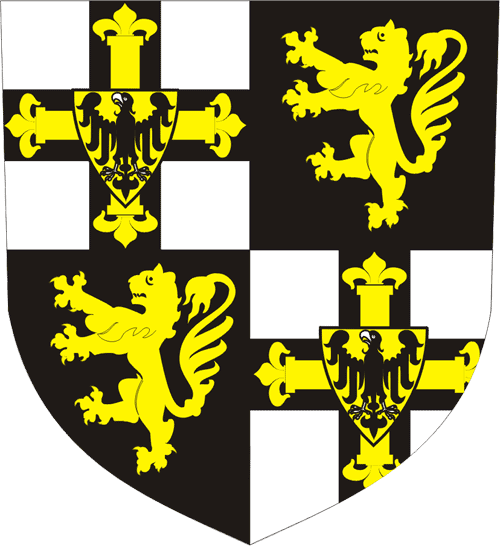
(5) Konrad I of Thuringia
- 1239-1240.
He was a proud, quick, fiery-tempered
magnate. He once seized the archbishop of Mainz, swung him round, and threatened to cut him in two; he stormed, plundered,
and set fire to an imperial free town for an affront offered him. However, admonished of his sins he became penitent and reconciled
himself by monastic vow to the Pope and mankind about 1234.

(6) Gerhard von Malberg
- 1241-1244.
Gerhard von Malberg (ca.
1200 - 26 November 1246) was the sixth Grand Master of the Teutonic Order, serving from 1240 to 1244. After being forced to
resign, he joined the Knights Templar. Von Malberg hailed from what is now Rhineland-Palatinate. His father was Margrave Theodoric
von Aere, who married Agnes von Malberg and took her last name and the castle Malberg. Von Malberg did not plan to join the
priesthood. He was married and had two sons, Thedoric and Otto. After the death of his wife, von Malberg traveled to Outremer,
where his kinsmen were members of the Knights Templar. He joined the Teutonic Knights in Acre in 1217 and had become the Komtur
of Toron by 1227 at the latest. In 1240 he became the Grand Marshal of the Order in Acre. His position in the Kingdom of Jerusalem
and his ties with the Templars brought von Malberg into conflict with Grand Master Hermann von Salza during the Sixth Crusade.
Holy Roman Emperor Frederick II and von Salza supported the movement of most of the Teutonic Knights to Prussia, while von
Malberg wanted the Order to focus on the Holy Land. After the death of von Salza's successor Conrad of Thuringia in 1240,
von Malberg was chosen Grand Master in 1240 or 1241 in order to build closer ties with the Middle East; Dietrich von Grüningen
was the president of the electoral chapter. Von Malberg had clear support from Pope Innocent IV, although von Malberg was
also favored by the emperor. Frederick II dispatched the new Grand Master, the Archbishop of Bari, and the Magister Roger
Porcastrello to pressure the papal conclave to elect Otto of St. Nicholas as pope, but Pope Celestine IV was chosen instead.
In 1243 Pope Innocent IV gave an apostolic ring, representing Prussia as a papal fief of the knights, to von Malberg, in return
for annual tribute from the Order; Frederick had also claimed the territory. The knights fought against Świętopełk
II of Pomerania during von Malberg's service. As tension grew from the splintering of the Order's forces between Prussia,
Livonia, and Outremer, support for von Malberg among the Order fell; the Grand Master traveled to Montfort in Outremer after
Innocent fled to Lyon. The Teutonic Knights organized a general chapter in Toron and requested von Malberg's resignation.
Although he initially proceeded with this, von Malberg then rejected the demand and appealed to the pope. After a papal investigation
revealed the Grand Master's poor leadership, he and some of his followers were allowed to leave the Teutonic Order and join
the Knights Templar.
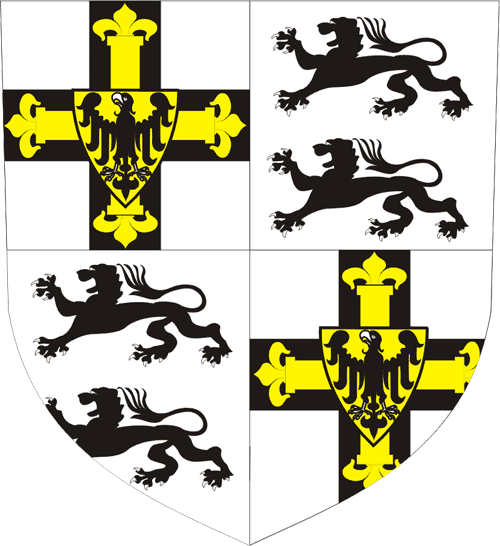
(7) Heinrich III
von Hohenlohe - 1244-1249.
Heinrich
von Hohenlohe (died 15 July 1249) was the seventh Grand Master of the Teutonic Order, serving between 1244-1249. He was the
son of one of the richest and most powerful feudal lords in Württemberg and had four brothers and one sister. Von Hohenlohe
was canon of the Bishopric of Würzburg from 1218-19. In 1220, he and two of his brothers joined the Teutonic Order, donating
at the same time his part of his father's inheritance to the Order. It turned out to be one of the most powerful komturships
in German lands, Mergentheim on the river Tauber. In 1221, von Hohenlohe went on a pilgrimage to the Holy Land and, upon returning,
became the Komtur of Mergentheim. Upon the orders of Grand Master Hermann von Salza in 1225, von Hohenlohe escorted Isabella
II of Jerusalem, the second wife of Emperor Frederick II, to the Kingdom of Italy. From that point, von Hohenlohe would spend
much time around the Grand Master, holding important positions in Germany, and residing in Mergentheim. When the Order's chapter
removed Gerhard von Malberg from the office of Grand Master, von Hohenlohe was chosen as his successor. He was considered
to support the emperor and, in the conflict between Frederick II and Pope Innocent IV, von Hohenlohe represented the interests
of the emperor, causing an uproar between many of the Order's brothers led by the Master of the Livonian Order, Dietrich von
Grüningen. In 1246, von Hohenlohe rushed to Prussia to start a crusade and as a result, he captured Christburg. He signed
a favorable treaty with the Old Prussians and the Duke of Pomerania, Świętopełk II the Great. Von Hohenlohe
died in July 1249, shortly after returning from Prussia. He was buried in the church in Mergentheim.

(8) Gunther von Wüllersleben
- 1249-1252.
Günther von Wüllersleben
(died May 3 or May 4, 1252) was the eighth Grand Master of the Teutonic Knights, serving from 1249-52. Von Wüllersleben
hailed from a ministerialis family of Hersfeld Abbey whose seat was in Bad Hersfeld. It is unknown when he joined the Teutonic
Order, although he served in Acre until 1215. He was a close friend of Grand Masters Hermann von Salza and Heinrich von Hohenlohe,
allowing him to take part in secret diplomatic missions for the Order. He spent 1244 in Prussia where he served under the
Master of Livonia, Poppo von Osterna. Günther von Wüllersleben was chosen Grand Master by the Order's capitulum
in 1249 or 1250 in Acre. Ludwig von Queden, the unsuccessful choice of the pro-papal party led by Dietrich von Grüningen,
was made Landmeister of Prussia. As the supreme authority of the Order, von Wüllersleben resided in Outremer and probably
never left Acre. Although little is known of his tenure as the Grand Master, von Wüllersleben tried to reconcile the
papal and imperial parties which were demoralizing the monastic life within the Order. He often sent missions to distant provinces
to supervise discipline. For a short time, he was able to overcome the division within the Order's chapter to which the pro-papal
fraction was leading. Von Wüllersleben died in Acre.

(9) Poppo von Osterna
- 1252-1257.
Poppo von Osterna (died 1257)
was the ninth Grand Master of the Teutonic Knights, serving from 1252-56 or 1257. Poppo hailed from a family with rich knightly
traditions which resided in Osternohe, just outside Nuremberg in Franconia. He joined the Teutonic Order in 1228 and was one
of the first friars to settle in Prussia. In 1233, Poppo took part in localisation of the town of Kulm (Chełmno). He
became the Prussian Master in 1240 and in 1241 fought in the Battle of Legnica although the participation of the Teutonic
Knights in the battle is questionable. In 1242 Poppo went to Austria with a German legation to collect money for war with
Duke Świętopełk II of Pomerania. From 1248-53, Poppo resided in Germany, becoming the ninth Grand Master in
1253. The pro-papal minority did not agree with the capitulum's choice and chose Wilhelm von Urenbach as their rival Grand
Master. After being chosen Grand Master, Poppo went to Prussia to start a war against the Sudovians. In 1254 he went with
a legation to King Ottokar II of Bohemia and received needed military help to start crusades in Sambia in 1254 and 1255. After
the conquest of Sambia, Poppo built several castles around the Vistula Lagoon, including Königsberg. While Landmeister,
Poppo supposedly led a detachment of Teutonic Knights at the Battle of Legnica in 1241 and was killed by the Mongols. However,
the presence of Teutonic Knights in the battle is uncertain. Poppo did die and was buried at Legnica (Liegnitz), but years
later while visiting his wife's nunnery and after serving as Grand Master.

(10) Hanno von
Sangershausen - 1257-1273.
Anno von Sangerhausen (died 8 July 1273)
served as the Grand Master of the Teutonic Order from 1256
to 1273. Sangerhausen originated from near Eisleben in Thuringia. His relatives were the vassals of the Thuringian counts.
In 1254 he was named as the Master of the Livonian Order. Two years later he left for the higher position as the Grand
Master of the Teutonic Order which he served until his death in 1273.
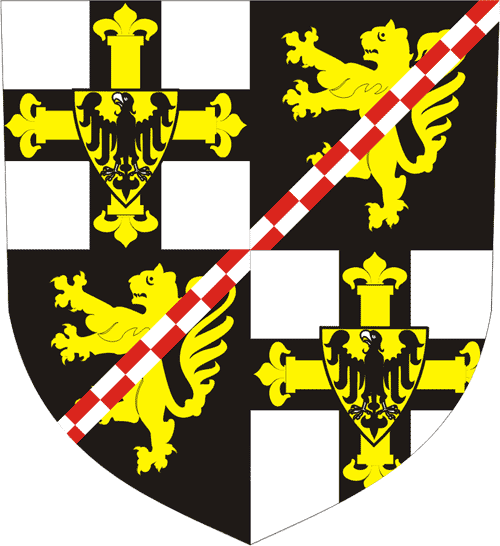
(11) Hartmann von
Helbrungen - 1273-1282.
Hartmann
von Heldrungen (died August 19, 1282) was the 11th Grand Master of the Teutonic Order, serving from 1273-82. Von Heldrungen
was an Imperial Knight from Thuringia in the Holy Roman Empire. He joined the Teutonic Order along with his brother Hermann
von Heldrungen between 1234 and 1237. In 1238, von Heldrungen became the Komtur in Saxony. He took part in diplomatic negotiations
and celebrations when the Livonian Order joined the Teutonic Order. He was trusted by the Grand Masters and because of that,
he was able to advance quickly within the Order. Between 1261 and 1266, he was the Grand Komtur and second in charge after
the Grand Master, Anno von Sangershausen. Von Heldrungen became the 11th Grand Master in the summer of 1273. His reign was
marked by relative peace for the order, and he encouraged the colonization of Prussia and Livonia. He gained more lands in
the empire as well as in Pomerania.
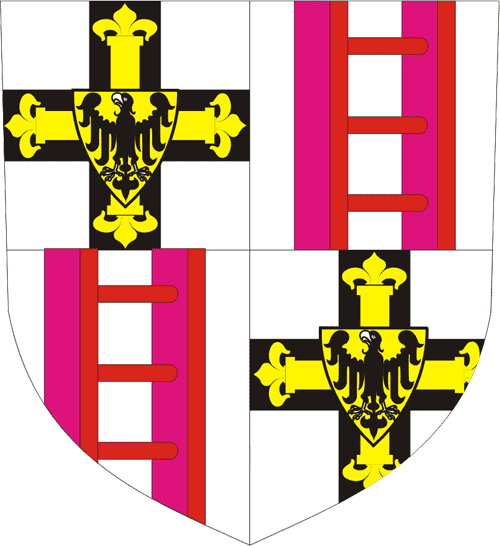
(12) Burkhard
von Scwanden - 1282-1290.
Burchard
von Schwanden (also Burkhard; died 1310) was the 12th Grand Master of the Teutonic Knights, serving from 1282 or 1283-1290.
Burchard hailed from a patrician part of Berne in Switzerland. He was a monk in Hitzkirch before becoming the Komtur of Konitz
(Chojnice) and advancing in 1277 to the rank of a regional Komtur of Thuringia and Saxony. He became grand master in 1282
or 1283. It was during his term that the political situation of the Kingdom of Jerusalem worsened. This situation was strongly
felt by the Order as its headquarters were still in Acre, but despite this, Burchard was in no hurry to help the crusaders
in the Middle East, as his mind was preoccupied with matters in Prussia, Livonia, and the Holy Roman Empire. In 1287, a Lithuanian
invasion devastated much of Livonia. Burchard left for Rome in 1289 where, in the presence of the Pope, the new borders of
the Monastic State of the Teutonic Knights by the Baltic Sea were drawn. Burchard also sought Pope Nicholas IV's permission
for the coronation of Rudolf von Habsburg. In early 1290, Burchard was forced by the Order to help the crusaders in Acre which
was under siege. An army gathered by the grand master in a hurry left for the Holy Land. Shortly after arriving, Burchard
surprisingly handed over his authority to Heinrich von Bonlant, Komtur of Sicily, resigned as the grand master, and left the
Order for reasons unknown. After leaving Acre, Burchard left for his native Switzerland where he decided to join the Knights
Hospitaller and became the Komtur of Buchsee. He died in 1310, but the exact date of his death is not certain.

(13) Konrad II von
Feuchtwangen - 1290-1296.
Konrad
von Feuchtwangen was the 13th Grand Master of the Teutonic Knights, serving from 1291-96. He was a relative of the later Grand
Master Siegfried von Feuchtwangen. In the first year of his term, the Muslims captured Acre, the last fortress of the crusaders
in the Kingdom of Jerusalem. Because the Teutonic Order had been based in Acre, von Feuchtwangen moved the Order's headquarters
to Venice.

(14) Gottfried von
Hohenlohe - 1296-1303.
Gottfried
von Hohenlohe (1265 - 19 October 1310 in Mergentheim) was the 14th Grand Master of the Teutonic Order, serving from 1297-1303.
Hohenlohe was born to Kraft von Hohenlohe and Willeborg von Wertheim and hailed from the rich Hohenlohe family of Burg Hohlach,
near Uffenheim. He was also a relative of a previous grand master, Heinrich von Hohenlohe. Hohenlohe joined the Teutonic Order
in 1279 and became a Komtur in Franconia in 1290. In 1294 he advanced to Deutschmeister, the position of the Master of the
branch of the Order within Germany. As a close associate of Grand Master Konrad von Feuchtwangen, he was chosen as his successor
by the capitulum in Venice in 1297. Hohenlohe was regarded as passive concerning further involvement of the Teutonic Order
in Prussia and Livonia, as well as not having listened to requests made by these provinces. The order's capitulum assembled
in Memel requested Hohenlohe's resignation, which he signed in Elbing on October 18, 1303. Hohenlohe left Prussia and settled
in Germany where he received a bailiwick in Franconia. He tried to reestablish himself as grand master, but this claim was
rejected by his fellow knight-brothers, who had selected Siegfried von Feuchtwangen. Hohenlohe resided in Ulm until he moved
to Mergentheim in 1307 where he died. He was buried in Marburg.

(15) Siegfried von
Feuchtwangen - 1303-1311.
Siegfried
von Feuchtwangen was the 15th Grand Master of the Teutonic Knights from 1303 until 1311. He was born in Franconia, in the
family of Konrad von Feuchtwangen. He took the office after his predecessor, Gottfried von Hohenlohe, had abdicated. Gottfried's
rule was marked by some internal strife within the Order. Under Siegfried, in the year 1308 the order seized Danzig and took
control of the Pommerellen, thus becoming Poland's strongest enemy. Siegfried moved the headquarters of the order from Venice,
located there by his predecessor, to Marienburg. Siegfried died there in 1311 and was buried in the cathedral of Kulmsee.

(16) Karl Bessart
- 1311-1324.
Karl Bessart von Trier (1265
- February 11, 1324), was the 16th Grand Master of the Teutonic Order, serving from 1311-24. Karl came from a family of patricians
of Trier and strove for a refined education. He was the eldest son of Jakob von Oeren, an alderman. He joined the Teutonic
Order in 1288 along with his two brothers, Jakob and Ortolf. During the 1290s he administered the office of Komtur for both
German and French bailiwicks (Champagne, Lorraine, and Burgundy). In 1304 he took on the office of Großkomtur and in
this capacity became the representative in Venice of Grand Master Siegfried von Feuchtwangen. Karl was chosen Grand Master
by the Order's capitulum in Marienburg in mid-June 1311. He was in favor of reforms within the Order, but his endeavors met
resistance. He attempted to introduce the office of conductor, whose appointees would be the only brothers able to deal in
commerce and trade. There were disputes among the Order's leaders led by Komtur Otto von Luterberg and Grand Hospitaller Friedrich
von Wildenberg which led to a special assembly of the Order's capitulum which forced him to resign and caused him to leave
Prussia in 1317. The split within the Order was averted by Pope John XXII who condemned the dissent of the Prussian komturs
and ordered them to call a new capitulum. On March 12, 1318 Karl accepted the position of Grand Master again during a general
meeting in Erfurt, although he did not return to Prussia. He spent the last years of his life in Trier, where he died in 1324.
He was buried in Trier's Church of St. Catherine.

(17) Werner von Orselen - 1324-1330.
Werner von Orseln (c. 1280 - November 18, 1330) was the 17th Grand Master of the Teutonic
Order, serving from 1324-1330. Von Orseln hailed from a family of vogts of Urseln near Frankfurt in Hesse. It is not known
when he joined the Teutonic Order. He is first mentioned in 1312 as a Komtur of Ragnit. In 1314, von Orseln becomes the Grand
Komtur and the Komtur of Marienburg. During a coup d'etat in the monastic state, he supported Grand Master Karl von Trier
and was exiled along with him. However, he returned in 1319 and he held the position of the Grand Master's resident in Prussia.
He negotiated discussion and restored hierarchic discipline within the Order. After the death of Karl von Trier, the Order's
capitulum chose von Orseln as the next Grand Master. Immediately after being elected, von Orseln was forced to start negotiations
with the Kingdom of Poland. These did not produce any results, however, and the Teutonic Order started preparations for war
with Poland. The Grand Master formed an anti-Polish coalition consisting of the Dukes of Masovia and Silesia and the King
of Bohemia. The pretext to start the war was the Polish invasion of the Duchy of Płock in 1327. In retaliation, the Grand
Master ordered the conquest of Kujavia and Dobrzyń Land. As the superior of the Order, von Orseln paid special attention
to spiritual life. Despite the ongoing war with Poland, he was able to organize two assemblies of the Prussian clergy and
issue several administrative acts forming the base of the political system of the state. Von Orseln died in Castle Marienburg
as a result of several wounds after an assassination attempt by a mad knight, Johan von Endorf. He was buried in a cathedral
in Marienwerder.
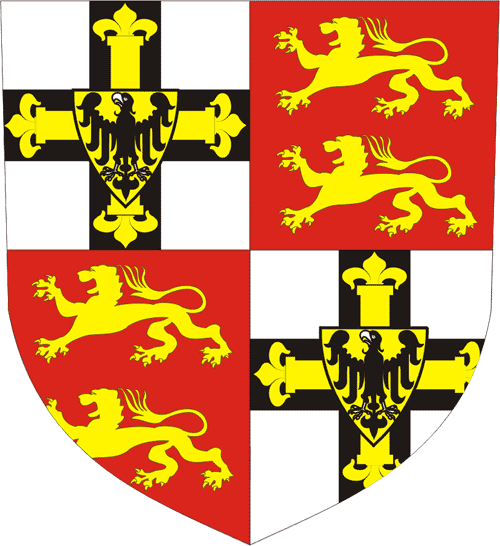
(18) Lothar of Brunswick
- 1331-1335.
Luther von Braunschweig (also
known as Lothar; ca. 1275 - April 18, 1335) was the 18th Grand Master of the Teutonic Knights, serving from 1331-35. A member
of the House of Welf, Luther was born to Albert I, Duke of Brunswick-Lüneburg, and Adelaide, the sister of a north Italian
vassal, Boniface of Monferatto. He was the youngest of his siblings and was designated to join the military order. He joined
the Teutonic Order in 1300 and his career started with a stint at the castle in Christburg and in 1308 he became the Komtur
of Gollub. A year later he became the house komtur of Christburg and in 1313 the house Komtur of Marienburg. In 1314 he became
the Grand Armourer and the Komtur of Christburg, founding several town and colonizing southern Prussia at the same time. Luther
became Grand Master during a war with Poland after the sudden death of Grand Master Werner von Orseln on February 17, 1331.
Luther continued the conquest of Kuyavia and ordered Dietrich von Altenburg to invade Greater Poland. During the invasion,
the Teutonic Knights went as far south as Kalisz (Kalisch), destroying the land around them. The Battle of Płowce of
1331 did not stop the Teutonic Order from further invasions. In May 1332, the crusading army captured Brześć Kujawski
and Inowrocław and new komturships were formed in Kuyavia. Despite the war, Luther tried to avoid any unnecessary military
actions. He concentrated on reforming religious life as well as writing poems and theologic books. He ordered the redesign
of Castle Marienburg to make it look more like the residence of an emperor rather than a monastery. Luther redesigned the
Chapel of St. Anna and built the mausoleum of the Grand Masters underneath it. Luther died in Stuhm and was buried in a cathedral
in Königsberg.
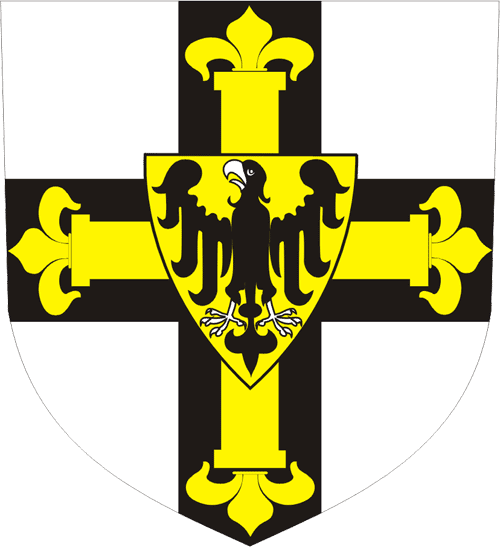
(19) Dietrich von
Altenburg - 1335-1341.
Dietrich
von Altenburg: 19th Grandmaster of the Teutonic Order, from 1335 to 1341. He came from Thuringia, Germany. Between 1320 and
1324, he was the Commander of Ragneta, then of Balga [1326-1331]. From 1331, he was a Grand Marshal and conducted raids against
Poland, conquering Kuyavia for the Order. An energetic and cruel man, he was the main accused before a Papal Tribunal, for
his part in crimes committed in the 1331 raids . As Grandmaster, he was very active in building and reconstruction work in
the Order's castles. In Malbork, his work was particularly important as he began the reconstruction of the Church of the Blessed
Virgin Mary and the building of the main tower. He also commissioned the mosaic figure of the Madonna, finished the Chapel
of St. Anne and built the first permanent bridge over the Nogat, and the Bridge Gate. He fell ill and died in October 1341
in Torun, where he had come to negotiate with Poland. He was the first Grandmaster to be buried in the Chapel of St. Anne
in Malbork Castle; his original grave-stone can still be seen there to this day.
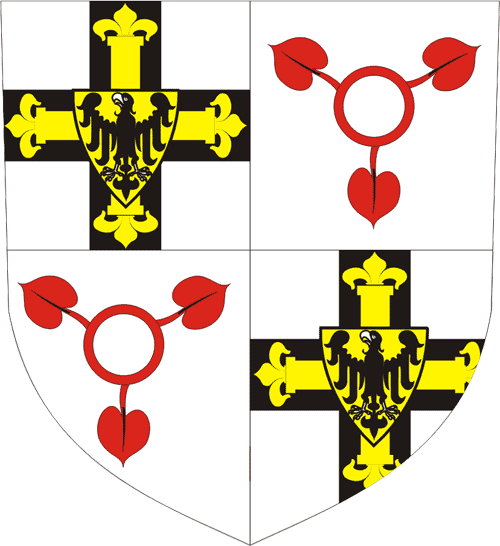
(20) Ludolf Konig
von Wattzau - 1342-1345.
Ludolf
König von Wattzau (sometimes spelled Weizau; 1280s - 1347 or 1348) was the 20th Grand Master of the Teutonic Knights,
serving from 1342 to 1345. König was born sometime between 1280 and 1290. It is not known when he joined the Teutonic
Order, but he is first mentioned in 1332 as the Grand Treasurer. In 1338 König became the Grand Komtur of Marienburg
and intensively colonized the surrounding region. In 1342 the Order's capitulum named him Grand Master. The most famous event
during König's short reign was the signing of the Treaty of Kalisz with the Kingdom of Poland on July 8, 1343. As many
Grand Masters before him had done, König led wars against the Grand Duchy of Lithuania. A retaliatory war by Lithuania
in 1345 caused large scale damage in Prussia, causing König to develop a mental illness according to some chroniclers
of the Order. He resigned as Grand Master in 1345 and took the post of Komtur of Engelsburg. According to chronicles, he regained
his mental health but died in 1347 or 1348.
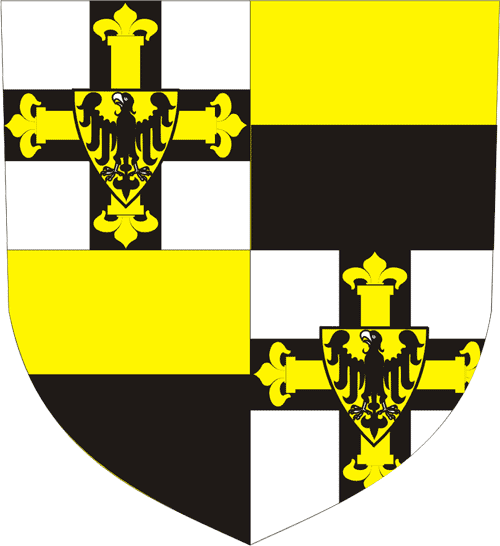
(21) Heinrich IV
Dusener von Arfberg - 1345-1351.
Heinrich
Dusemer von Arfberg (died 1351) was the 21st Grand Master of the Teutonic Knights, serving from 1345-51. Dusemer hailed from
Swabia and joined the Teutonic Order in 1311. As a young knight he fought against the Lithuanians. Legend has it that he frequently
would duel with Grand Duke Vytenis. Owing to his bravery and fighting prowess, he advanced in the Order's hierarchy quickly.
In 1318 he becomes a member of a convent on a castle in Labiau and in 1329 Komtur of Ragnit. In 1333 he became the Vogt of
Sambia and in 1334 the Komtur of Brandenburg (Frisches Haff). A year later, Dusemer became the Grand Marshal and the Komtur
of Königsberg. In 1339 he came into conflict with Grand Master Dietrich von Altenburg and as a punishment was degraded.
He was sent to Strasburg where he took over the komturship. He was reinstated by the next Grand Master, Ludolf König.
On December 13, 1345, the Order's capitulum in Marienburg chose Dusemer as the next Grand Master, as after several defeats
the Order needed someone with battlefield experience. Shortly after being chosen the Grand Master, Dusemer retaliated and
attacked Lithuania in a campaign which ended with a total victory over the Lithuanian army by the Strawa River on February
2, 1349. The planned conquest of Lithuania had to be averted, however, as the Black Death had reached Prussia and forced Dusemer
to withdraw his army from the conquered lands. Although the Order was able to regroup afterward, Dusemer decided to resign
as the Grand Master. After Winrich von Kniprode was named as his replacement, Dusemer settled in Brattian where he did not
hold any important functions. Dusemer died in 1351 and was buried in the Marienburg Castle in a mausoleum under the Chapel
of St. Anna.

(22) Winrich von Kniprode - 1351-1382.
Winrich von Kniprode was the 22nd Grand Master of the Teutonic Knights. He was the longest serving Grand Master,
holding the position for 31 years (1351-1382). Von Kniprode was born in 1310 in Monheim am Rhein near Cologne. He served as
the Komtur of Danzig (1338-1341) and Balga (1341-1343). In 1341 was promoted to be the Grand Marshal. Von Kniprode was elected
Grand Master in 1351. He constantly fought with the Grand Duchy of Lithuania to gain access to Livonia. He achieved a victory
in the Battle of Rudau. Von Kniprode died in 1382 and was buried in Marienburg Castle in the mausoleum under the Chapel of
St. Anna.

(23) Konrad III Zollner
von Rothstein - 1382-1390.
Conrad
Zöllner von Rothenstein (died August 20, 1390) was the 23rd Grand Master of the Teutonic Order, serving from 1382-90.
His name has also been spelled Konrad and von Rotenstein. Zöllner's career with the Teutonic Order started in 1353 when
he became a procurator in Preußisch Mark and shortly thereafter a House Komtur of Christburg. Zöllner became the
Komtur of Danzig in 1368 and the Great Hospitaller and Komtur of Christburg in 1372. Despite the fact he was not associated
with influential people within the Teutonic Order and lacked political experience, Zöllner was chosen Grand Master in
1382 after the death of Winrich von Kniprode, the previous Grand Master. His first matter of order was to take care of the
internal problems of the country. Command of the army and the war with the Grand Duchy of Lithuania was left to Konrad von
Wallenrode, who was made the Komtur of Königsberg. Zöllner reformed the administrative divisions of Prussia, supported
the colonization of uninhabited regions, and founded a university in Kulm. It was during his rule when Lithuania was Christianized
and Jogaila became King Władysław II Jagiełło of Poland. In the last years of his life, Zöllner tried
to break up the Polish-Lithuanian union and cause a strife between the two great dukes of Lithuania, Vytautas and Jogaila.
Zöllner died in Christburg and was interred in Castle Marienburg. He is buried in the mausoleum of the Grand Masters
under the Chapel of Saint Anna.

(24) Konrad IV von
Wallenrode - 1391-1393.
Konrad
IV von Wallenrode (born between 1330 and 1340, died 23 July 1393) came from a family with a rich knightly tradition that had
its roots in Franken and had resided in Schwabach, south of Nürnberg . Konrad von Wallenrode joined the Teutonic Order
about 1370. In 1377, Grand Master Winrich von Kniprode named him komtur of Schlochau. His real career, however, did not begin
until 1382, when Konrad Zollner von Rotenstein became Grand Master. After the death of Kunon von Hattenstein, von Wallenrode
became Grand Marshal and komtur of Königsberg. He was chiefly tasked with organizing crusades against the Grand Duchy
of Lithuania, and became quite adept at it. In 1387 Konrad von Wallenrode became komtur of Marienburg and Great Komtur of
the Teutonic Order. He was the obvious choice to be von Rothstein's successor. In 1390, Grand Master Konrad III Zollner von
Rothstein died, and it seemed only a matter of time before von Wallenrode would become the next Grand Master. However, he
encountered great opposition from Walrabe von Scharffenberg, komtur of Danzig. It was not until August 20, 1391, that Wallenrode
became the 24th Grand Master of the Teutonic Order, thanks to the support of two electors, Siegfried Walpot von Bassenheim,
komtur of Elbing, and Rudiger von Elner, komtur of Tuchola. His short-lived, 2 year rule was filled with crusades against
Lithuania. Von Wallenrode was against the Polish-Lithuanian Union and was trying to dissolve the union. In 1392 W³adys³aw
Opolczyk offered him a partition of Poland with the Holy Roman Empire, the Teutonic Order, Brandenburg, Hungary and the Silesian
dukes all taking part of it, but von Wallerode rejected it. The same year he started another miliary action against Lithuania
with many knights, the guests of the Order from all over Europe, lead by Henry, duke of Derby, the future king, Henry IV of
England and Vytautas the Great. Konrad von Wallenrode died during the preparation for the next crusade against the Grand Duchy
of Lithuania on the 23 July 1393. The probable reason of his death is apoplexy. He lead active economic and colonization actions
in Prussia. He gave many lands to Germans and built two castles, Gottersweder and Mittenburg. In 1393 he created a new komturship
in Ryna with Friedrich von Wallenrode, his own brother and a later komtur of Gniew, Strasburg and the Grand Marshal of Königsberg
who died in the Battle of Grunwald in 1410, as its first komtur. His other relative was Johann von Wallenrode, the archbishop
of Riga between 1393 - 1416. Konrad von Wallenrode provided some elements, including the protagonist's name, to Adam Mickiewicz's
narrative poem, Konrad Wallenrod.

(25)
Konrad V von Juningen - 1393-1407
Konrad von Jungingen (also Conrad; ca. 1355 - 30 March 1407) was the 25th Grand Master of the Teutonic Knights, serving
from 1393 to 1407. Born in Jungingen in southwestern Germany, Konrad was the elder brother of Ulrich von Jungingen, who was
his successor as Grand Master of the Teutonic Knights. An invasion army under Konrad conquered the island of Gotland in 1398,
destroyed parts of Visby, and drove the Victual Brothers out of Gotland and the Baltic Sea. The Monastic State of the Teutonic
Knights in Prussia was at the peak of its power during Konrad's leadership. Konrad died in 1407 at Marienburg Castle and was
buried there. He died a most unusual martyr's death. His doctor prescribed Sexual Intercourse as a cure for his Gallstones,
from which von Jungingen was suffering at the time. The chaste knight refused to comply, and suffered the consequences.
(26) Ulrich von
Jungingen - 1407-1410
Ulrich von Jungingen
(1360 - July 15, 1410) was komtur of Balga (1396 - 1404) and marshal and komtur of Königsberg (1404 - 1407). In 1407
he became Grand master of the Teutonic Order. He was killed in the Battle of Grunwald (Tannenberg), commanding the forces
of the Teutonic Knights.He was a younger brother of Konrad von Jungingen.
(27) Heinrich von Plauen
- 1410-1413.
Heinrich von Plauen (the Elder)
(ca. 1370-1429) was the 27th Grand Master of the Teutonic Knights, serving from November 1410 to October 1413. He is famous
for saving Castle Marienburg after the Order's defeat in the Battle of Grunwald (Tannenberg) in 1410. He wanted to continue
war with Poland and for that reason was removed from the office by Michael Küchmeister von Sternberg. Because all male
members of his family were baptized as Heinrich (Henry), he is sometimes known as Heinrich von Plauen the Elder to differentiate
from his relative, Heinrich von Plauen the Younger (died ca. 1441).Von Plauen was born in Vogtland, between Thuringia and
Saxony. Von Plauen arrived in Prussia around 1390 as the Order's guest, but later became a full member. He did not hold any
important positions until 1402 when he became the Komtur of Nessau (Nieszawa). He was promoted to Komtur of Schwetz (Świecie)
in 1407. Von Plauen did not take the part in the Battle of Grunwald on July 15, 1410. Upon receiving the news of the Order's
defeat, he took initiative and assembled an army of 3,000 men to defend Marienburg, capital of the Order. He correctly suspected
that it was where victorious Polish and Lithuanian armies were headed. He also sent letters, acting as the Grand Master, to
Germany asking for additional troops and money. Von Plauen arrived to Marienburg on time and energetically organized the defense.
The Siege of Marienburg started on July 18 and lasted until September 19, 1410. King of Poland Jogaila did not expect a strong
resistance and was not prepared for a long-term siege. The siege, holding Jogaila's army in place, helped to organize defensive
forces in other parts of Prussia and gave time for relief to arrive from Livonian Order and Germany. Jogaila had to retreat.
Von Plauen ordered to pursue the retreating Polish army and recaptured all fortresses (except those on the Polish-Prussian
border) by the end of October. In November 1410 for his services in the defense of Marienburg and Prussia, von Plauen was
chosen the 27th Grand Master of the Order, skipping officials with higher held positions, like Werner von Tettingen, the Order's
Minister of Diplomacy and the Komtur of Elbing (Elbląg), who fought in the Battle of Grunwald. Von Plauen inherited a
difficult task of rebuilding Order's fortresses, restoring economy, recruiting new Knights, and defending Order's reputation
in Europe. Von Plauen's major diplomatic accomplishment was signing the Peace of Thorn on February 1, 1411. The peace was
rather favorable to the Order: it retained its core territories. The Order assigned Samogitia to Grand Duke of Lithuania Vytautas
the Great for his and Jogaila's lifetime. After their death Samogitia was to return to the Order. The border was not decided
by the peace - an international commission was to mediate further negotiations. Poland received Dobrzyń Land and Kuyavia.
The Order was to pay a large ransom for prisoners of war and war indemnity, equivalent to six million Prague groschen, in
four installments. To raise the money for the first installment, von Plauen called representatives of Prussian cities to Osterode
(Ostróda) in February 1411. He proposed a special assessment of 1⅔% on cities' possession. All cities, except
for Danzig (Gdańsk), agreed. Because the decision was not unanimous, von Plauen called a second meeting, this time in
Elbing (Elbląg). Thorn (Toruń) joined Danzig in opposition to the tax. Von Plauen decided to enforce the assessment.
Thorn capitulated without much resistance, while Danzig resisted blockade until April 5, 1411. Von Plauen actively fought
off the opposition of the Lizard Union. In 1411 von Plauen discovered a plot by Georg von Wirsberg, Komtur of Rehden (Radzyń
Chełmiński), and ordered the beheading of Nicholas von Renys, one of the four knights who formed the Lizard Union,
for helping the Poles. The execution took place in Graudenz (Grudziądz), which brought him even less popularity. The
first two installment payments were made on time. When von Plauen saw that he could not make the third payment on time he
asked Sigismund, Holy Roman Emperor for help. Sigismund agreed to mediate and the parties met in Breslau (Wrocław) in
March 1412. In August 1412 the emperor delivered his decision that the Peace of Thorn was just and that a commission should
negotiate a reduction to the war indemnity. Another commission would decide the border between Samogitia and Prussia and inhabitants
of the region would be given a choice to remain in Samogitia and become part of the Grand Duchy of Lithuania or to relocate
to Prussia and become part of the monastic state of the Teutonic Knights. To universal surprise von Plauen made the final
payment on time in January 1413. The commission regarding Samogitian borders did meet. On May 3, 1413 Benedict Macra, appointed
by Sigismund, decided that the right bank of the Neman River, including Memel (Klaipėda), should belong to Lithuania.
Despite the Order's financial troubles and weakened military capability after the defeat of 1410, von Plauen started preparations
for another war with the Kingdom of Poland. He rejected decision by Benedict Macra and by late summer 1413 gathered 6,000
men near the border with Pomerania and 15,000 on the border with Dobrzyń Land and Masovia (commended by Michael Küchmeister
von Sternberg). The time seemed right as Jogaila was busy in the south while Vytautas waged a war against Novgorod. Küchmeister
attacked northern Poland, but returned only after 16 days. Attack on Pomerania was similarly stopped by disobedient Knights.
Von Plauen was removed from his office on October 9, 1413 by Michael Küchmeister von Sternberg, the Grand Marshal and
Komtur of Königsberg (Kaliningrad). Küchmeister disapproved von Plauen's decision to wage another war and supported
further peace talks with the Kingdom of Poland and Grand Duchy of Lithuania. The general chapter conviened five days later.
Herman Gans was appointed as an interim Grand Master until a formal general assembly would meet in January 1414. Von Plauen
officially resigned and Küchmeister was appointed as the next Grand Master. Von Plauen was first appointed as a Komtur
to minor fortress, but soon was arrested when Jogaila did not support the new regime and demanded to return von Plauen to
his office. Küchmeister unsuccessfully reopened diplomatic talks with Poland and a brief Hunger War broke out in summer
1414. Heinrich von Plauen was released from Danzig jail in 1418. At that time he became the procurator of Lochstädt (Pavlovo)
near Königsberg, where he died in 1429.



(28)
Michael Kuchenmeister von Sternberg - 1414-1422.
Küchmeister was born in Silesia. He was the procurator of Rastenburg (1396-1402) and the Großschäffer
of Königsberg (1402-05). After the Peace of Raciąż of 1404 he held the position of Vogt of Samogitia and from
1410 the Vogt of the Neumark. After the Battle of Grunwald (or Tannenberg), he tried with his army of mercenaries and vassals
to re-take the regions lost by the Teutonic Order. In September 1410, Küchmeister lost the Battle of Koronowo and was
captured by the Polish army, and was not released from prison until the summer of 1411. The defeat prompted the signing of
the Peace of Thorn (1411). In the aftermath of the defeat at Tannenberg, the Teutonic Order lost much of its military and
economic importance. The way of thinking of the Old Prussians had changed as well. It is not surprising that when Grand Master
Heinrich von Plauen was heading towards war with the Kingdom of Poland, on September 29, 1413, his army (consisting of Prussian
nobility and villagers) stationed near the village of Lautenburg refused to fight the Poles, and he was relieved from his
position as Grand Master by Küchmeister. On January 7, 1414 Küchmeister was chosen as the 28th Grand Master of the
Teutonic Order. Although he preferred negotiations over war, he strengthened Marienburg Castle with an extra wall on the north
side. He resigned in March 1422 before the Gollub War began. Küchmeister died in Danzig and was buried in the mausoleum
under the Chapel of St. Anna in Marienburg Castle.

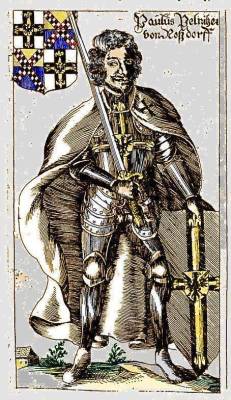

(29) Paul Belenzer von
Ruszdorf - 1423-1440.
Paul von
Rusdorf (died 1441) was the 29th Grand Master of the Teutonic Knights, serving from 1422-41. The Treaty of Melno was one of
von Rusdorf's first acts; it brought stability to the Order and its relations, but fighting resumed in 1431 with the Polish-Teutonic
War (1431-1435). Johannes von Baysen was one of his ambassadors.
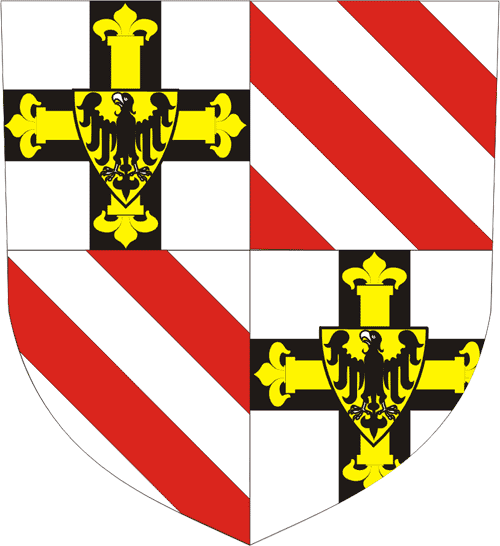
(30) Konrad VI von
Erlichshausen - 1441-1449.
Konrad
von Erlichshausen (died 7 November 1449) was the 30th Grand Master of the Teutonic Knights, serving from 1441-49. Konrad came
from Ellrichshausen in Swabia, now part of Satteldorf in Baden-Württemberg. Early in his career he was a close ally of
Michael Küchmeister von Sternberg and later on he held the positions of Grand Komtur and Grand Marshal. After its defeat
in the Battle of Grunwald (1410) and the resulting First Peace of Thorn (1411), the Order's power declined both in and outside
their Ordenstaat. Credits had to be sought from abroad and high taxes caused opposition within Prussia and its Hanseatic cities.
Konrad's opinion was in conflict with Grand Master Paul von Rusdorf, which caused his demotion to a lesser position. He led
the opposition in the Order which forced von Rusdorf to resign as the Grand Master of the Teutonic Order on 2 January 1441.
After being chosen Grand Master in 1441, Konrad tried to reform the Teutonic Order and tried to negotiate a compromise with
the Prussian cities and gentry who had formed the Prussian Confederation. During his tenure in 1443, Konrad issued the Handfeste
that legally founded Arys (Orzysz) with an area of 790,000 ha. While visiting Seehesten (Szestno) he renewed the town rights
of Sensburg (Mrągowo) on 20 February 1444. Later that year he founded Krausendorf (Kruszewiec) near Rastenburg (Kętrzyn).
Konrad's plans were never fully realized as he died in Castle Marienburg in 1449 and was buried in a mausoleum under the Chapel
of Saint Anna, like most of the other Grand Masters. He was succeeded by his nephew Ludwig von Erlichshausen, who led the
Order into further decline and into the Thirteen Years' War.

(31) Ludwig von Erlichshausen
- 1450-1467.
Ludwig von Erlichshausen (1410
- 1467) was the 31st Grand Master of the Teutonic Knights, serving from from 1449/1450 to 1467. As did his uncle and predecessor
Konrad von Erlichshausen, Ludwig came from Ellrichshausen in Swabia, now part of Satteldorf in Baden-Württemberg. Ludwig
was aide to Grand Master Paul von Rusdorf 1436-40, Komtur of Schönsee (Wąbrzeźno) near Thorn (Toruń) (1442-47),
and Komtur of Mewe (Gniew) (1446-50). After the death of his more compromising uncle in 1449, Ludwig became Grand Master in
1450, despite being of limited ability and bad temper. His uncompromising stance towards the Prussian Confederation made the
Prussian cities ask the Polish king for support, which led to the outbreak of the Thirteen Years' War in 1454 between the
Order and the Polish-supported Prussian Confederation. As the Order was short on cash since the expensive First Peace of Thorn
(1411), Ludwig had to hand over the Order's headquarter Marienburg Castle to his mercenaries in lieu of pay during the war.
In turn, they sold it to the Polish king who seized the castle in June 1457. The Order had to move its capital to Königsberg.
Their former capital of Marienburg was not the only loss, however, as the Order had to cede other areas in the Second Peace
of Thorn in 1466: Pomerelia, Culmerland, Warmia, and a part of Pomesania including Marienwerder (Kwidzyn). Ludwig died at
Königsberg.
(32) Heinrich VI
von Reuss - 1467-1470.
Reuß
von Plauen came from the Reuss family from Plauen, Thuringia. Incidentally, the family named every male child Heinrich (Henry).
Earlier, the brothers Heinrich Reuss von Plauen the Elder and Heinrich Reuss von Plauen the Younger had served in the Thirteen
Years' War. Reuß von Plauen joined the Teutonic Order at a young age. He was first a brother in a monastery in Germany.
Reuß von Plauen arrived in Prussia in the 1420s when he became the Vogt of Dirschau. In 1433 he became the Komtur of
Balga and in 1440 the Vogt of Natangia. From 1441, Reuß von Plauen held the position of the Grand Hospitaller and the
Komtur of Elbing. As the Grand Master's nephew, his influence in the Order grew and he advanced quickly. He took control of
the Order's army during the Thirteen Years' War and became famous for destroying the Polish army in the Battle of Konitz.
After the Second Peace of Thorn in 1466, Reuß von Plauen became the Komtur of Preußisch Holland. After the 1467
death of his uncle, Grand Master Ludwig von Erlichshausen, Reuß von Plauen assumed control over of the Teutonic Order
without having been elected Grand Master. He settled in Mohrungen and waited for further moves of King Casimir IV Jagiellon
of Poland, hesitating to call the meeting of the Order's capitulum to elect him de jure. Pressured by Casimir, he finally
called the capitulum in 1469 to Königsberg. This was just a formality as the decision was unanimous and Reuß von
Plauen was declared the 32nd Grand Master of the Teutonic Order on 17 October 1469. Reuß von Plauen went to Piotrków
Trybunalski to attend the sejm where he paid homage to Casimir IV. On his way back to Prussia he suffered a stroke and became
paralyzed which made further travel impossible. Reuß von Plauen died in Mohrungen on 2 January 1470 and was buried in
Königsberg Cathedral.

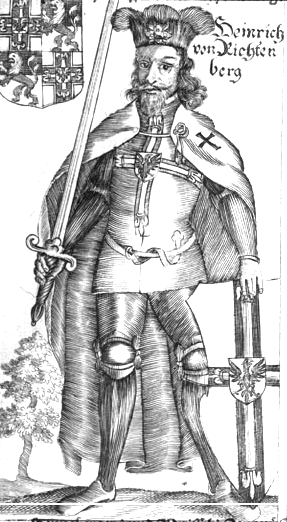

(33) Heinrich VII Reffle
von Richtenberg - 1470-1477.
Heinrich
Reffle von Richtenberg (died 1477) was the 33rd Grand Master of the Teutonic Knights, serving from 1470-77. After being defeated
in the Thirteen Years' War, the Teutonic Order was forced to surrender western Prussia to Poland and become Polish vassals
in the Second Peace of Thorn of 1466. Von Richtenberg's predecessor Heinrich Reuß von Plauen had delayed his in order
to avoid having to pay homage to the King of Poland. After finally doing so in 1470, he died on his way home. The main struggle
in Prussia during the tenure of von Richtenberg was the War of the Priests, a dispute between the Bishopric of Warmia, which
claimed to have received Prince-Bishopric status by Emperor Charles IV a century prior, and King Casimir IV Jagiellon of Poland.
The Order successfully supported Nicolaus von Tüngen in the dispute. Von Richtenberg died in Königsberg.

(34) Martin Truchsetz
von Wetzhausen - 1477-1489.
Martin
Truchseß von Wetzhausen zu Dachsbach (c. 1435 - 3 January 1489) was the 34th Grand Master of the Teutonic Knights, serving
from 1477-1489. Von Wetzhausen hailed from a family of Imperial Knights, later barons from the Würzburg area in Franconia.
Several members of his family settled in Prussia and held important posts within the Teutonic Order. Early in his career,
he was a monk in Mewe, Strasburg, and Elbing. From 1462 von Wetzhausen became an adviser to Grand Master Ludwig von Erlichshausen
and since 1476 the Komtur of Osterode. On August 4, 1477 the Order's Capitulum elected him Grand Master, despite him having
once pledged that "ehe er welde dem Könige von Polen schweren, er welde ehe in seinem Blutte vortrincken",
meaning he'd rather drown in his blood than pay homage to the King of Poland - which the Grand Masters were obligated to do
since the Second Peace of Thorn (1466). Von Wetzhausen supported Nicolaus von Tüngen, a candidate for Bishop of Warmia,
in the War of the Priests, which had started as a dispute in 1467 when King Casimir IV Jagiellon of Poland did not accept
his candidature. In 1478, after having gained international support from King Matthias Corvinus of Hungary, but hardly any
support from within Prussia, von Wetzhausen took a military stance against Poland and captured Culm, Strasburg, and Preußisch
Stargard. The Polish army under the command of Jan Biały and Jan Zieleziński, supported by Royal Prussia and Danzig,
defeated the Order's army quickly and the Grand Master had to paid the homage to the Polish king on 9 October 1479 in Nowe
Miasto Korczyn. Afterwards, von Wetzhausen focused on internal policy within the Order and its problematic financial situation.
In the summer of 1488, the Grand Master became very ill and he died in early 1489 in Königsberg. He was buried in Königsberg
Cathedral.
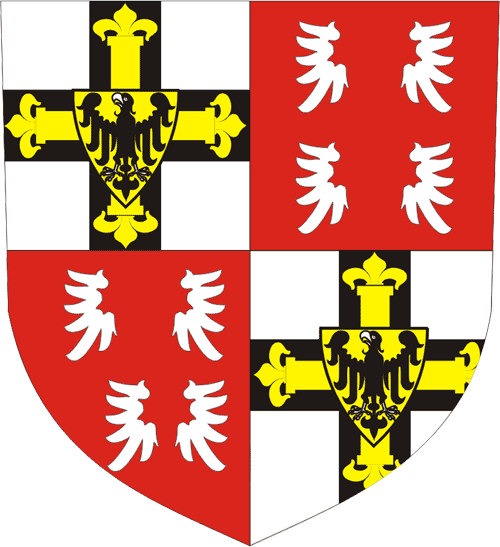
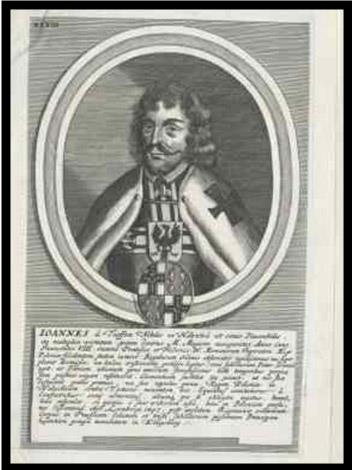

(35) Johann von Tieffen
- 1489-1497.
Believed to have been born from
a noble family in Thurgau, Switzerland, on the 25th August 1497 and buried in the Konigsberg (Kaliningrad) Cathedral, von
Tieffen's career as a Teutonic Knight began in the City of Elblag, Poland as the right hand of the GroBhospitalliers to Henry
Reuss of Plauen. In 1474 he was appointed as commander of Memel, now a port city of Lithuania known as Klaipeda. Two years
later he became Grand Komtur and took the Teutonic Order on many diplomatic missions throughout many European courts. During
the times of the Grand Master - Martin Truchseb von Wetzhausen, von Tieffen tried to release the pressure between the Teutonic
Order and the Kingdom of Poland. In 1480 A.D. von Tieffen became the Komtur of Brandenburg as well as the Grand Hospitaller
of the Order. On June 25th, 1487, von Tieffen issued a charter in Drengurt to establish a church in Alt Jucha. In 1489 the
Order's Capitulum named von Tieffen the Grand Master. Immediately after being elected, he went to Poland and paid the required
homage as vassal to King Casimir IV Jagiellon of Poland in Radom on 18 November 1489. Settling down the political situation
with Poland helped him concentrate on internal affairs of the Order. However, Lucas Watzenrode, the Bishop of Warmia, tried
to gain independence from the Polish Crown as well as from the Grand Master. In May 1490 von Tieffen sent a written request
to Watzenrode to allow him to consecrate a chapel of the John the Baptist in GroB Sturlack, as well as to allow a priest from
Schwarzstein to say mass. In 1492, King John I Albert of Poland suggested moving the Teutonic Order from Prussia to Podolia,
but von Tieffen opposed the idea. He understood this would mean the end of the sovereignty of the Teutonic Order. He appealed
to Maximilian I, Holy Roman Emperor, and the plan was abandoned. Called upon by King John I Albert, von Tieffen had to lead
a crusade against the Ottoman Empire in order to capture ports along the coast of the Black Sea. He had an army of 400 knights,
but illness started to spread among the army. Traveling along the river Dniestr, the Grand Master fell ill from the dysentery.
He decided to return to Lemberg, where he never recovered. Von Tieffen died in 1497 and was buried in Konigsberg (Kaliningrad)
Cathedral. His legacy was the concept of electing an Imperial Prince as Grand Master, which as subject to the Emperor could
resist having to pay homage to Kings of Poland. The Present heirs of Johann von Tieffen are represented by His Royal Highness
The Grand Duke Douglas von Frankfurt, Grand Master of the Order of Concordia, Head of the Grand Ducal House of Deffenbaugh,
Heirs General of Jonann von Tieffen the 35th Hochmeister.

(36) Friedrich of
Saxony - 1497-1510.
Friedrich
of Saxony (Torgau 26 October 1473 - Rochlitz 14 December 1510) was the 36th Grand Master of the Teutonic Knights. He was the
third (and youngest surviving) son of Albert, Duke of Saxony and Zedena of Bohemia. He was part of the second generation of
the junior branch (the Albertine Line) of the Wettin dynasty and must not be confused with his cousin of the same name (the
protector of Martin Luther) from the senior branch (the Ernestine Line) who ruled Saxony. In 1498, aged 24, he was elected
by the Teutonic Knights to the post of grand master in which served until his death at age 36. His older brother George had
married Barbara, a sister of King John I Albert of Poland. The knights had been in a long power struggle with Poland over
the Monastic State of the Teutonic Knights. They hoped that by selecting someone connected by marriage to the ruling Jagiellon
dynasty of Poland, someone who was also a member of the Wettin dynasty ruling much of Germany, that they would strengthen
their position. When the Polish King summoned Frederich, the new grand master, to do homage for the Order's holdings, Frederich
referred the matter to the Imperial Reichstag set to meet in Worms in 1495. The Reichtag informed the Polish King that he
could not interfere in the grand master's free exercise of power in Prussia. Friedrich's delaying tactics were assisted by
their being three Polish kings during his 12 years in office. By custom, grand masters of the Order did not marry, so he had
neither wife nor descendents.

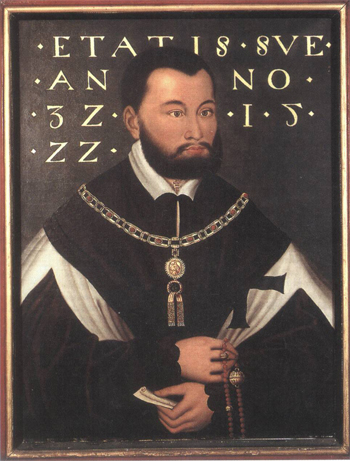

(37) Albrecht of
Brandenburg - 1510-1525.
Albert
(May 16, 1490 - March 20, 1568), (Albertus in Latin, Albrecht in German) Grand Master of the Teutonic Order and first duke
of Ducal Prussia, was the third son of Frederick of Hohenzollern, prince of Ansbach and Bayreuth, and Sophia, daughter of
Casimir IV Jagiello Grand Duke of Lithuania and King of Poland and his wife Elisabeth of Habsburg. Born at Ansbach on May
16, 1490, he was intended for the church, and spent some time at the court of Hermann, elector of Cologne, who appointed him
canon in his cathedral. Duke Albrecht's Titles (on his proclamation of 1561, Koenigsberg): Albrecht the Elder, Margrave of
Brandenburg, in Prussia, Stettin in Pomerania Duke of the Cassuben (Kashubs) and Wends, Burggrave of Nuremberg and Count of
Ruegen etc. Turning to a more active life, Albrecht accompanied the emperor Maximilian I to Italy in 1508, and after his return
spent some time in Hungary. In December, Frederick, Grand Master of the Teutonic Order, died, and Albert was chosen as his
successor early in 1511 in the hope that his relationship to his maternal uncle Sigismund I the Old Grand Duke of Lithuania
and King of Poland, would facilitate a settlement of the disputes over east Prussia, which had been held by the Order under
Polish suzerainty since the Second Treaty of Thorn in 1466, but this was not acknowledged by pope or emperor and had been
circumvented by the Grand Masters. The new Grand Master, aware of his duties to the empire and to the papacy, refused to submit
to the crown of Poland and as war to retain independence appeared inevitable, he made strenuous efforts to secure allies,
and carried on protracted negotiations with Emperor Maximilian I. The ill-feeling, influenced by the ravages of members of
the Order in Poland, culminated in a struggle which began in December 1519. During the ensuing year Prussia was devastated,
and Albert was granted a four-year truce early in 1521. The dispute was referred to the Emperor Charles V and other princes,
but as no settlement was reached he continued his efforts to obtain help in view of a renewal of the war. For this purpose
he visited the Diet of Nuremberg in 1522, where he made the acquaintance of the reformer, Andreas Osiander, by whose influence
he was won over to the new faith. He then journeyed to Wittenberg, where he was advised by Martin Luther to abandon the rules
of his Order, to marry, and to convert Prussia into a hereditary duchy for himself. This proposal, which was understandably
appealing to Albert, had already been discussed by some of his relatives, but it was necessary to proceed cautiously, and
he assured Pope Adrian VI that he was anxious to reform the Order and punish the knights who had adopted Lutheran doctrines.
Luther for his part did not stop at the suggestion, but in order to facilitate the change made special efforts to spread his
teaching among the Prussians, while Albert's brother, Georg, Prince of Ansbach, laid the scheme before their uncle Sigismund
of Poland. After some delay the king assented to it, with the proviso that Prussia should be treated as a Polish fiefdom,
and after this arrangement had been confirmed by a treaty concluded at Kraków, Albert pledged a personal oath to Sigismund
I and was invested with the duchy for himself and his heirs on February 10, 1525. Albrecht Hohenzollern and his brothers receive
the Duchy of Prussia as a fiefdom from the Polish King, Sigismundus I the Elder in 1525.The Estates of the land then met at
Königsberg and took the oath of allegiance to the new duke, who used his full powers to promote the doctrines of Luther.
This transition did not, however, take place without protest. Summoned before the imperial court of justice, Albert refused
to appear and was proscribed, while the Order, having deposed the Grand Master, made a feeble effort to recover Prussia. But
as the German princes were experiencing the tumult of the Reformation, the peasants' revolt, and the wars against the conquering
Turks, they did not attack the duke, and agitation against him soon died away. In imperial politics Albert was fairly active.
Joining the League of Torgau in 1526, he acted in unison with the Protestants, and was among the princes who banded together
to overthrow Charles V after the issue of the Augsburg Interim in May 1548. For various reasons, however, poverty and personal
inclination among others, he did not take a prominent part in the military operations of this period. The early years of Albert's
rule in Prussia were fairly prosperous. Although he had some trouble with the peasantry, the lands and treasures of the church
enabled him to propitiate the nobles and for a time to provide for the expenses of the court. He did something for the furtherance
of learning by establishing schools in every town and by freeing serfs who adopted a scholastic life. In 1544, in spite of
some opposition, he founded the university at Königsberg, where he appointed his friend Osiander to a professorship in
1549. Albert also paid for the printing of the Astronomical Tables ("Prutenische Tafeln") compiled by Erasmus Reinhold.
This step was the beginning of the troubles which clouded the closing years of Albert's reign. Osiander's divergence from
Luther's doctrine of justification by faith involved him in a violent quarrel with Melanchthon, who had adherents in Königsberg,
and these theological disputes soon created an uproar in the town. The duke strenuously supported Osiander, and the area of
the quarrel soon broadened. There were no longer church lands available with which to conciliate the nobles, the burden of
taxation was heavy, and Albert's rule became unpopular. After Osiander's death in 1552 he favoured a preacher named Johann
Funck, who, with an adventurer named Paul Scalich, exercised great influence over him and obtained considerable wealth at
public expense. The state of turmoil caused by these religious and political disputes was increased by the possibility of
Albert's early death and the need, should that happen, to appoint a regent, as his only son, Albert Frederick was still a
mere youth. The duke was consequently obliged to consent to a condemnation of the teaching of Osiander, and the climax came
in 1566 when the Estates appealed to Sigismund II, Albert's cousin, son of Sigismund I and Elisabeth Habsburg, Grand Duke
of Lithuania and King of Poland, who sent a commission to Königsberg. Scalich saved his life by flight, but Funck was
executed. The question of the regency was settled, and a form of Lutheranism was adopted, and declared binding on all teachers
and preachers. Virtually deprived of power, the Duke lived for two more years, and died at Tapiau on March 20, 1568. He had
married Dorothea, daughter of Frederick, King of Denmark in 1526, and following her death in 1547, married Anna Maria, daughter
of Eric I, Duke of Brunswick-Lüneburg. Albert was a voluminous letterwriter, and corresponded with many of the leading
personages of the time. For switching to Protestantism Albrecht had been excommunicated by the Pope. The Habsburg rulers of
the Holy Roman Empire continued to claim the office of Grand Master of the Teutonic Knights as administrators of Prussia.
In 1891 a statue was erected to his memory at Königsberg.

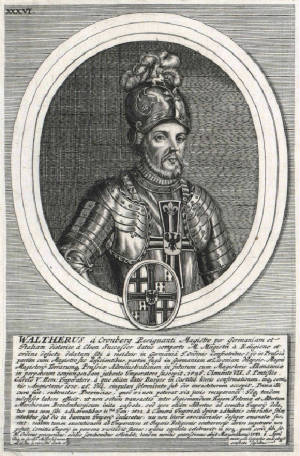

(38) Walter
von Cronberg - 1527-1543.
Walter
von Cronberg (1477 or 1479 - 4 April 1545) was the 38th Grand Master of the Teutonic Order, serving from 1527-43. Von Cronberg
hailed from a rather poor family of knights from Kronberg Castle near Frankfurt. He joined the Teutonic Order in 1497 and
held the post of a tax collector in the Komturei of Mergentheim from 1499. He became the Komtur of Frankfurt in 1504. During
the times of his predecessor Albert of Brandenburg-Ansbach, von Cronberg was the legate to King Sigismund I the Old of Poland.
In 1517 he founded the Brotherhood of St. Sebastian and in 1526 he was chosen Deutschmeister, the Master of the German branch
of the Order. In 1525, when Albert had converted to Lutheranism and was excommunicated, von Cronberg declared himself the
next Grand Master. His claim was based on a statute of Werner von Orseln from the 14th century which stated that in the case
of the absence of the Grand Master, the Master of one of the other branches of the Order would resume the position. However,
this decision was met with some resistance from the Master of the Livonian branch, Wolter von Plettenberg, who also laid a
claim to this function. The conflict was averted by Emperor Charles V who settled the matter in 1527 in favour of von Cronberg,
declaring him "Administrator of the Office of Grand Master". Also, the claim of the Grand Master to Albert's Duchy
of Prussia was renewed. As no control could be exercised there, the Grand Master's seat was moved from Königsberg to
the seat of the Deutschmeister in southern Germany, Mergentheim near Würzburg. From 1530, von Cronberg dedicated himself
to save the Catholic character of the Order. He was unsuccessful, however, in preventing further secularization of the Teutonic
Order in the Holy Roman Empire, with increasingly more knights breaking the oath by conversion to Protestantism or disobedience
to the Catholic Grand Masters.

(39) Wolfgang Schutzbar
- 1543-1566.
Wolfgang Schutzbar (called Milchling)
(1483 - 1566) hailed from the family of Schutzbar genannt Milchling from Hesse. He joined the Teutonic Order in 1507 and was
from 1529 to 1543 Komtur of the Bally of Hesse at Marburg. In 1543, he became Hochmeister and Deutschmeister, a combined office
located at Mergentheim. There, he built the first town hall in 1564, and the first water supply. A monument dedicated to him
is found at the local Market Square. His coat of arms shows three hearts meeting in the center of the shield.

(40) Georg Hundt
von Weckheim - 1566-1572.
Georg
Hund von Wenkheim (* 1520 in Wenkheim; † 17. März 1572 in Bad Mergentheim) war der 40. Hochmeister
des Deutschen Ordens von 1566 bis 1572. Georg
Hund(t) von Wenkheim stammt aus dem fränkischen Adelsgeschlecht der Hund von Wenkheim. Er erschien als Mitglied
im Deutschen Orden ab 1544. Er diente ursprünglich in Heilbronn, bis er 1553 Komtur von Weißenburg wurde
und ab 1558 Komtur von Frankfurt am Main. Vor seiner Wahl als Hochmeister war er kurzfristig Landkomtur der Deutschordensballei
Franken. 1566 auf dem Reichstag zu Augsburg, wo der Kurfürst von Sachsen
ebenfalls seine Belehnung erhielt, wurde Georg Hund von Wendheim vom Kaiser Maximilian II. (HRR) als Hochmeister
und Administrator mit Preußen belehnt. Diese zwei Belehnungen fanden unter großem Aufwand im Freien
statt. Wenkheim war auch ein Berater von Kaiser Maximilian II. und in verschiedenen Funktionen im Dienste der
Habsburger. 1570 befand er sich auf einer diplomatischen Mission für Erzherzogin Anna von Österreich,
der späteren Frau von König Philipp II. aus dem Geschlecht der Habsburger. Im Inneren des Ordens sorgte er als Verfechter der Gegenreformation für eine Stärkung der Disziplin
im Sinne des Konzils von Trient und eine Entfernung reformatorischer Sympathisanten. Er wendete viel Zeit für
den Ausbau von Schloss Mergentheim auf, das zum würdevollen Sitz der Hochmeister wurde. Georg starb in Mergentheim
und wurde in der dortigen Deutschordenskirche begraben.

(41) Heinrich
VIII von Bobenhausen - 1572-1590.
Heinrich
von Bobenhausen (* ca. 1514; † 21. März 1595) war der 41. Hochmeister des Deutschen Ordens von 1572 bis
1590. Heinrich von Bobenhausen entstammt dem fränkischen Adelsgeschlecht der Familie von Bobenhausen.
Er war zunächst Komtur von Bad Mergentheim in der Zeit von 1547 bis 1549, anschließend Komtur von Frankfurt am
Main und bis 1565 Komtur von Regensburg. Seit 1557 war er Landkomtur der Deutschordensballei Franken. 1572 stieg er zum Hoch-
und Deutschmeister mit Sitz in Mergentheim auf. 1572 wurde von Bobenhausen vom Kaiser mit Preußen belehnt. 1576 wurde
er zusätzlich durch Kaiser Maximilian II. zum Administrator des Hochstifts Fulda ernannt. In der Zeit als Hochmeister
verschlechterten sich die Beziehungen zu Kaiser Maximilian II. massiv. Er musste es unter Kaiser Rudolf II. hinnehmen, dass
man ihm ab 1585 einen Koadjutor, seinen späteren Nachfolger als Hochmeister, den Sohn Maximilians und Bruder des Kaisers,
Maximilian III., zur Seite stellte und er faktisch seine Macht abgeben musste. So übergab Bobenhausen nach der Eidesleistung
von Maximilian im Oktober 1585 die Residenz und die Kammerhäuser in Mergentheim an Maximilian. 1586 erfolgte dann
die Erlaubnis zur Führung des preußischen Hochmeisterkreuzes durch Maximilian unter Vorbehalt der Superiorität,
der Regalien und des Titels des Hoch- und Deutschmeisters. 1586 musste er auch die Administration der Reichsabtei Fulda an
Maximilian. abgeben. Den Versuch der erneuten Übernahme der Ordensregierung im 1587 unterband der Mergentheimer Statthalter.
Er zog sich ins Kloster Weißenburg zurück und wurde 1590 schließlich zum Rücktritt gezwungen. Zu seinen
Bautätigkeiten gehört die Errichtung des Deutschordensschlosses Kirchhausen und des Schlosses Stocksberg in Stockheim.
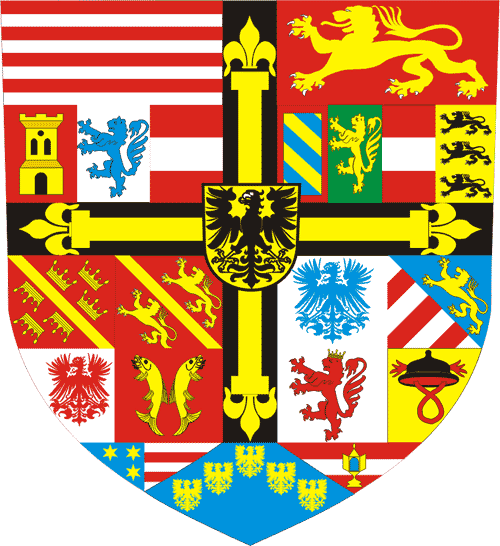
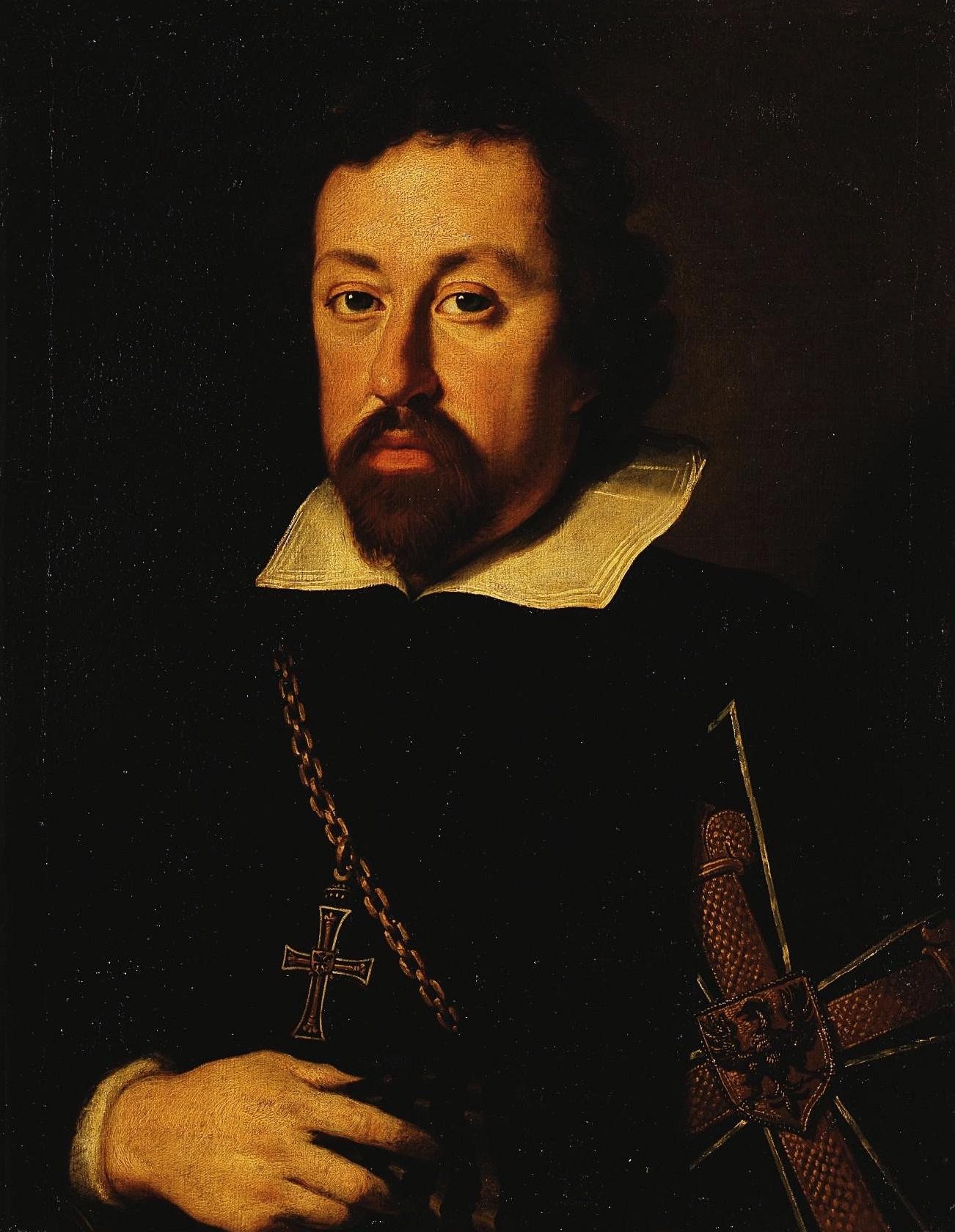

(42) Maximillian II of
Austria - 1590-1618.
Archduke
Maximilian III of Austria, also known as Maximilian der Deutschmeister (born October 12, 1558 in Wiener Neustadt; died November
2, 1618 in Vienna) was the third son of Emperor Maximilian II. From 1585 onwards, he was the Grand Master of the Teutonic
Order and administrator of Prussia. In 1587, he was a candidate for the monarch of Polish-Lithuanian Commonwealth, following
the death of previous Polish king, Stefan Batory. The election was disputed by other candidate, Sigismund III Wasa. When Maximilian
attempted to resolve the dispute by bringing a military force and starting the war of Polish succession, he was defeated at
the Battle of Byczyna by the supporters of Sigismund, under the command of Polish hetman Jan Zamojski. He was taken captive
and released only after intervention by Pope Sixtus V. In 1589, he waived his right to the Polish crown. The inactivity of
his brother Rudolf II in this matter contributed to Rudolf's bad reputation. From 1593 to 1595 he was Regent in Inner Austria,
and subsequently in Tyrol, where he proved to be a consequent proponent of the counterreformation. He also worked to dispose
Melchior Khlesl, and worked to ensure that Archduke Ferdinand of Inner Austria would succeed as Holy Roman Emperor. He most
known legacy is the baroque Archduke's Hat, which is exhibited in the treasure chamber of the monastery of Klosterneuburg
and was used for ceremonial purposes as late as 1835.
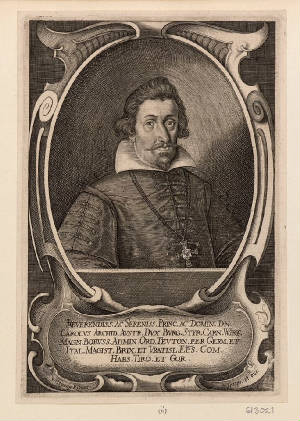
(43) Karl of Austria
- 1619-1624.
Charles of Austria
(German: Karl von Österreich; 7 August 1590 – 28 December 1624), nicknamed the
Posthumous, a member of the Imperial House of Habsburg, was Prince-Bishop of Wrocław (Breslau) from 1608,
Prince-Bishop of Brixen from 1613, and Grand Master of the Teutonic Order from 1618 until his death. In 1621 he
also received the Bohemian County of Kladsko as a fief from the hands of his brother, Emperor Ferdinand II. Born in Graz, Styria, Charles was the youngest son of Archduke Charles II of
Austria (1540–1590), ruling over the Inner Austrian estates of the Habsburg Monarchy, and his consort Maria
Anna (1551–1608), daughter of the Wittelsbach duke Albert V of Bavaria. Born two months after his father's
death, he was nicknamed "Charles the Posthumous" (Karl der Posthume). As the last of 15 siblings,
Charles, like his brother Leopold V was destined for an ecclesiastical career. In 1602 he was appointed to a canonry of Salzburg Cathedral and in 1605 to a canonry of Passau. Further canonries in Trent and Brixen followed in 1606,
and in Cologne Cathedral in 1618. These were
for the most part absentee appointments that provided him with an income from ecclesiastical revenues. On 7 July
1608, at the age of 17, he was elected Prince-bishop at Breslau (Wrocław);
he entered the city on December 14. In 1613 Charles also became Bishop of Brixen, however, he left the governance
of the diocese to an administrator as he had
chosen Neisse (Nysa) for his permanent
residence. He did not receive holy orders
until 1615, due to his young age. In 1619 he succeeded his cousin Archduke Maximilian
III of Austria as Grand Master (Hochmeister) of the Teutonic Knights.
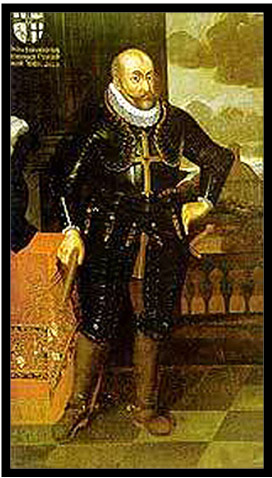
(44) Johann Eustach von
Westernach - 1625-1627.
Johann
Eustach von Westernach (* 16. Dezember 1545 in Neuendettelsau; † 25. Oktober 1627 in Mergentheim)
war der 44. Hochmeister des Deutschen Ordens von 1625 bis 1627. 1566 trat Johann Eustach von Westernach in den Orden ein.
1567 wurde er Küchenmeister der Kommende in Ellingen, 1571 Trappier (der für die Bekleidungsversorgung Verantwortliche)
der Kammerkommende in Frankfurt am Main und 1580 Hauskomtur in Ellingen. Ab 1585 war er Landkomtur
der Deutschordensballei Franken (siehe auch Kapfenburg). Bereits 1613 trat er auf dem Reichstag
zu Regensburg in Vertretung für den Hochmeister Maximilian III. auf, bei dem er stellvertretend den Lehnsbrief des Kaisers
Mathias für Preußen erhielt. Nach dem Tod Maximilians 1618 wurde er dem Hochmeister Karl von Österreich als
Koadjutor zur Seite gestellt und folgte ihm schließlich mit der Wahl am 19. März 1625 im Amt des Hochmeisters
nach. Am 12. Mai 1625 wurde ihm durch Kaiser Ferdinand die urkundliche Zusage gegeben, dass dem Deutschen Orden Preußen
wieder eingeräumt werden sollte. Er starb 1627 und wurde in der Schlosskirche in Bad Mergentheim begraben.
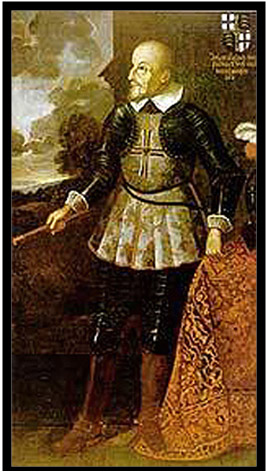
(45) Johann Kasper I von
Stadion - 1627-1641.
Johann
Kaspar von Stadion (* 21. Dezember 1567 in Belfort; † 21. November 1641 in Ammern bei Mühlhausen in Thüringen)
war der 45. Hochmeister des Deutschen Ordens von 1627 bis 1641. Er war Präsident des Hofkriegsrats und Geheimer
Rat von Kaiser Ferdinand II.
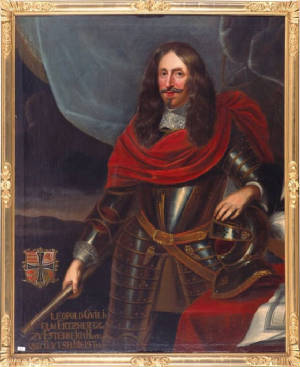
(46) Leopold Wilhelm of
Austria - 1641-1662.
Archduke
Leopold Wilhelm of Austria (Wiener Neustadt January 5, 1614 -Vienna November 20, 1662), was a Governor of the Spanish Netherlands,
a military commander and a patron of the arts. He is also known as Leopold Wilhelm von Habsburg but as a son of the Emperor
carried the title Archduke of Austria. The youngest son of Ferdinand II of Habsburg and of Maria-Anna of Bavaria (1574-1616),
daughter of William V, Duke of Bavaria. His elder brother became Emperor Ferdinand III (1608 - 1657). When he assumed the
government of the Spanish Netherlands, Leopold Wilhelm, being a great lover of art, employed the great Flemish painter David
Teniers the Younger not only as a painter but as keeper of the collection of pictures he was then forming. With the rank and
title of "ayuda de camara," Teniers took up his abode in Brussels shortly after 1647. Immense sums were spent in
the acquisition of paintings for the archduke. A number of valuable works of the Italian masters, now in the Vienna Museum,
came from Leopold's gallery after having belonged to Charles I and the duke of Buckingham. De Bie (1661) states that Teniers
was some time in London, collecting pictures for the duke of Fuensaldana, then acting as Leopold's lieutenant in the Netherlands.
Paintings in Madrid, Munich, Vienna and Brussels have enabled art critics to form an opinion of what the imperial residence
was at the time of Leopold Wilhelm, who is represented as conducted by Teniers and admiring some recent acquisition. No picture
in the gallery is omitted, every one being inscribed with a number and the name of its author, so that the ensemble of these
paintings might serve as an illustrated inventory of the collection. When Leopold returned to Vienna, the pictures also travelled
to Austria, and a Flemish priest, himself a first-rate flower painter, Van der Baren, became keeper of the archducal gallery.
Leopold bequeathed his gallery to his nephew Leopold I, and it became imperial property. It is now part of the Kunsthistorisches
Museum in Vienna.
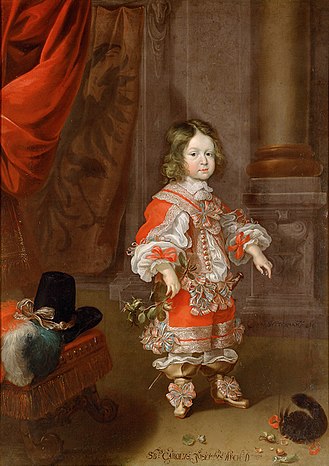
(47) Karl Josef of Austria
- 1662-1664.
Charles Joseph (German: Karl
Joseph; 7 August 1649 - 27 January 1664) was an Archduke of Austria and Grand Master of the Teutonic Knights (1662-64). He
was also the bishop of Olmütz, and Breslau, Passau. Charles Joseph was born in Vienna as the son of Ferdinand III, Holy
Roman Emperor and Maria Leopoldine of Austria. His mother died shortly after giving birth to him when just 17 years old. Charles
Joseph, himself, died in his early teens in Linz.
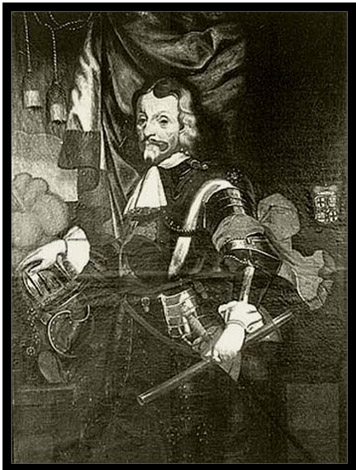
(48) Johann Kasper II
von Ampringen - 1664-1684.
Johann
Caspar von Ampringen (* 19. Januar 1619; † 9. September 1684 in Breslau) war Hochmeister des Deutschen Ordens.
Von 1682 bis zu seinem Tode war er Oberlandeshauptmann von Schlesien und zugleich Herzog von Freudenthal. Johann Caspar von
Ampringen entstammte einem Breisgauer Adelsgeschlecht. Seine Eltern waren Johann Christoph von Ampringen und Susanne von
Landsberg. Über seine Jugend und Bildung ist nur wenig bekannt. Nach der Erziehung bei den Jesuiten soll er in kaiserlichen
Diensten gestanden haben. 1646 trat er in den Deutschen Orden ein, wo er 1650 zum Komtur von Mergentheim
und 1654 zusätzlich zum Komtur von Würzburg aufstieg. Nachfolgend erlangte er die Positionen eines Ratsgebietigers
der Deutschordensballei Franken sowie eines Hochmeisterlichen und Geheimen Rats. Als Landkomtur der Ballei Österreich
setzte er sich ab 1660 für die Sicherung der windisch-kroatischen Grenze zum Schutz vor den Türkenkriegen und die
Gründung von Ordensniederlassungen in diesem Gebiet ein. Als Vertreter seines Ordens am kaiserlichen Hof in Wien gehörte
er ab 1662 dem Ordensdirektorium für den noch nicht volljährigen Erzherzog Karl Joseph an, der das Amt des Hochmeisters
bekleidete. 1663 wurde Ambringen zum Statthalter der schlesischen Herrschaft Freudenthal und der mährischen Herrschaft
Eulenberg ernannt, die beide nach der Schlacht am Weißen Berg in den Besitz des Deutschen Ordens gelangt waren. Nach
dem Tod des Erzherzogs Karl Joseph 1664 wurde Ampringen zu dessen Nachfolger als Hochmeisters des Deutschen Ordens gewählt.
1672 gewährte er der Herrschaft umfangreiche Privilegien. 1673 wurde ihm das Amt eines Gubernators für Ungarn übertragen,
das er 1679 aufgab, da er mit der gestellten Aufgabe wenig erfolgreich war. Wegen seiner Verdienste wurde er am 4. November
1682 vom Kaiser zum Oberlandeshauptmann von Schlesien ernannt. Da nach dem Großen Landesprivileg des böhmischen
Königs Vladislav II. von 1498 dieses Amt stets ein schlesischer Fürst bekleiden sollte, wurde die Minderherrschaft
Freudenthal auf Ambringens Lebenszeit zu einem Herzogtum erhoben und er selbst in den böhmischen Fürstenstand
und am 10. November 1682 in den Reichsfürstenstand erhoben. Als Hochmeister veranlasste er u. a. die Renovierung der
weiträumigen Schlossanlage in Freudenthal. Ampringen starb 1684 als letzter seiner Familie in Breslau und wurde in der
Ordenskirche zu Freudenthal beigesetzt. Im Amt des Hochmeisters folgte ihm der Wormser Bischof Ludwig Anton von der Pfalz.
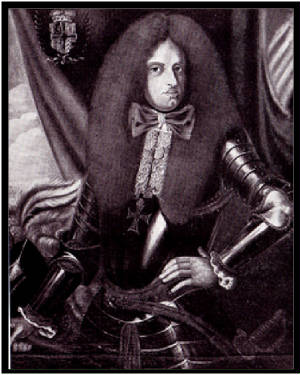
(49) Ludwig Anton of Palatinate-Neuburg
- 1685-1694.
Ludwig Anton von Pfalz-Neuburg
(also sometimes called Ludwig Anton von Rhein zu Neuburg) (1660–1694) was the Grand Master of the Teutonic Knights
from 1685 to 1694, and the Prince-Bishop of Worms from 1691 to 1694. A member of the House of Wittelsbach, Ludwig Anton von
Pfalz-Neuburg was born in Düsseldorf on 9 June 1660. His father, Philip Wilhelm was at the time Count Palatine of Pfalz-Neuburg
and would become Elector Palatine in 1685. His mother was Landgravine Elisabeth Amalie of Hesse-Darmstadt. As a younger
son, Ludwig Anton was groomed for a career in the church from an early age. He was made a canon of Cologne Cathedral (1664),
Mainz Cathedral (1668), Strasbourg Cathedral (1669), Speyer Cathedral (1674), and Liège Cathedral (1679). He was also
the abbot of Fécamp Abbey from 1674. He was inducted into the Teutonic
Knights on 10 December 1679 and chosen as the coadjutor of the Grand Master six days later. He took part in the 1683 Battle
of Vienna and was decorated by Leopold I, Holy Roman Emperor for his bravery. He succeeded as Grand Master of the Teutonic
Knights on 6 September 1684. He subsequently participated in the Battle of Buda (1686), where he was seriously injured
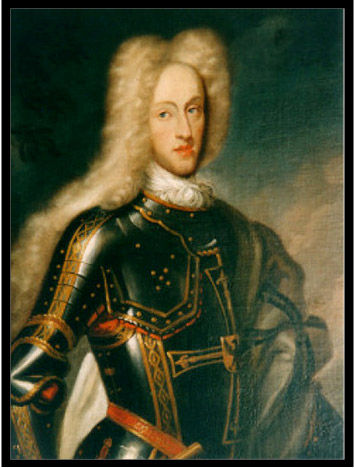
(50) Ludwig Franz of Palatinate-Neuburg
- 1694-1732.
Franz Ludwig von Pfalz-Neuburg
(1664-07-18-1732-04-06) was bishop and archbishop of several dioceses and Hochmeister of the Teutonic Order. He was born in
Neuburg an der Donau as son of Philipp Wilhelm, Elector Palatine and Elisabeth Amalie von Hessen-Darmstadt. In 1683, he became
Archbishop of Wrocław after the death of his brother Wolfgang Georg, who should have held this office. In 1694, he assumed
the additional offices of Hochmeister of the Teutonic Order and Bishop of Worms. 1716, he became Archbishop of Trier. During
his regency in Trier, he reorganized the jurisdiction in the diocese and advanced the renovation of the Roman Moselle bridge
and the cathedral. He became Archbishop of Mainz in 1729, giving up the position in Trier as the Pope had prohibited a merging
of the two Archbishoprics. In Mainz, Franz Ludwig also started some administrative and judicial reforms as well as the construction
of the Deutschhaus. Franz Ludwig died in Wrocław and is buried there in a specially built chapel in Wrocław Cathedral.
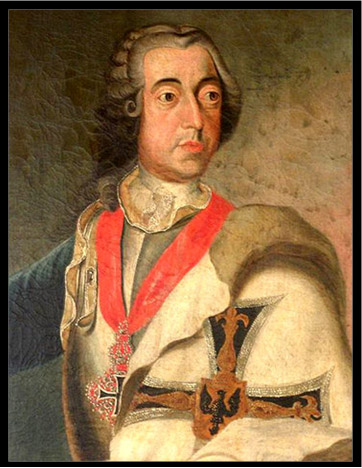
(51) Clemens August of
Bavaria - 1732-1761.
Clemens or
Klemens August of Bavaria (1700-1761) was born in Brussels, a member of the Wittelsbach house. He was the son of Maximilian
II Emanuel, elector of Bavaria and Teresa Kunegunda Sobieska. His family was split during the War of the Spanish Succession
and was for many years under house arrest in Austria. Only in 1715 did the family become re-united. His uncle Joseph Clemens,
Elector and Archbishop of Cologne saw to it that Klemens August of Bavaria received several appointments in Alt-Oetting, Diocese
of Regensburg and at the Prince-Bishopric of Berchtesgaden and he soon received papal confirmation as Bishop of Regensburg,
and later of Cologne. As Archbishop of Cologne, he was one of the Electors, a Prince-Bishop of Münster, Hildesheim, and
Osnabrück, and a Grand Master of the Teutonic Order. Klemens August who mostly sided with the Austria Habsburg-Lorraine
side during the wars of Habsburg successions, personally crowned his brother Charles VII emperor at Frankfurt in 1742. After
Charles' death in 1745 Klemens August then again leaned toward Austria. Klemens August patronised the arts, among others he
ordered to build the palaces Augustusburg and Falkenlust in Brühl, North Rhine-Westphalia, Germany, listed on the UNESCO
cultural world heritage list.
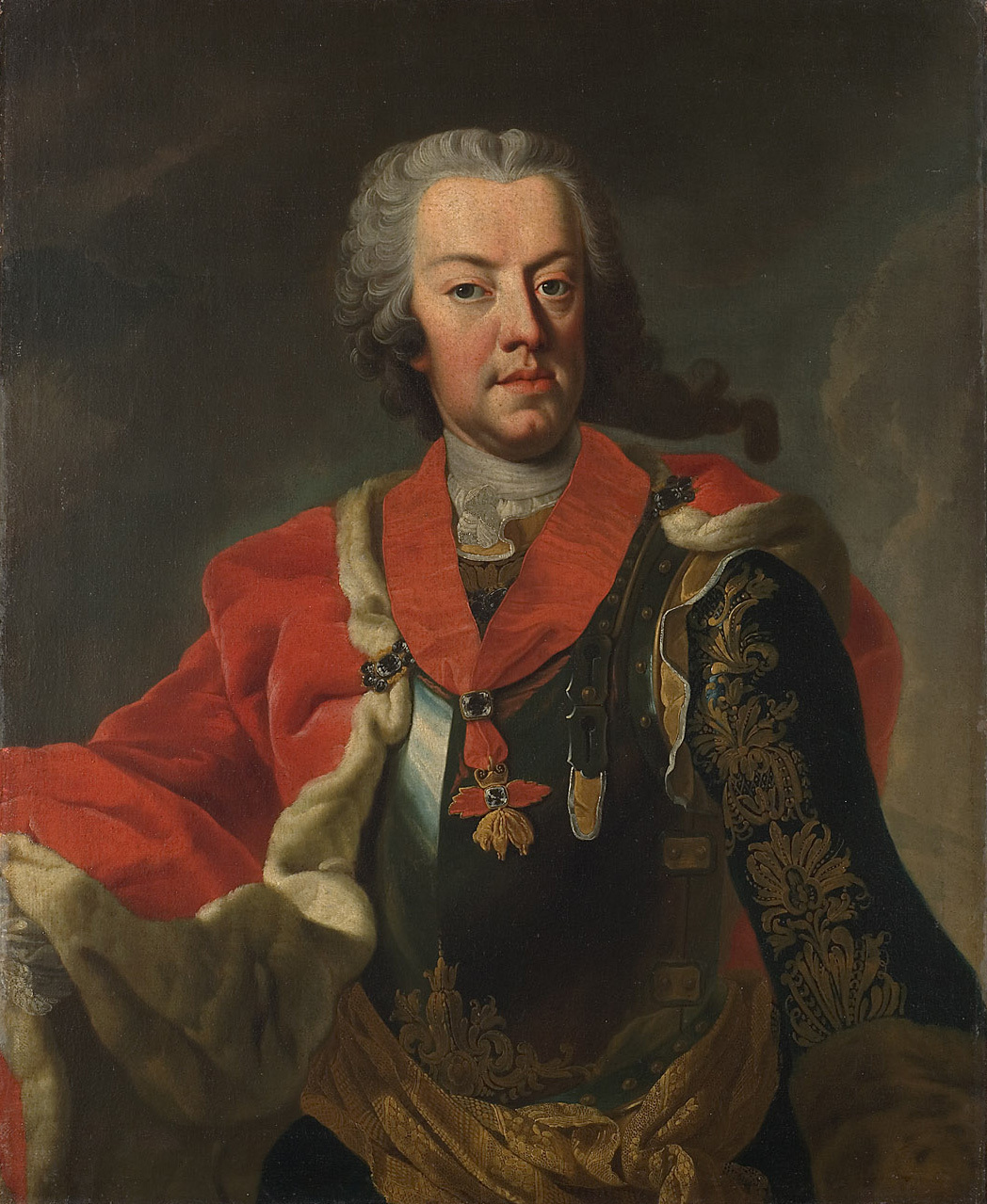
(52) Charles
Alexander of Lorraine - 1761-1780.
Prince
Charles Alexander of Lorraine (December 12, 1712 - July 4, 1780) was the younger brother of Francis Stephen, the last Duke
of Lorraine. When Lorraine was given up by his brother in 1737 to allow Francis to marry the Archduchess Maria Theresa, heiress
of Emperor Charles VI, he entered the Imperial service. During the War of the Austrian Succession, he was one of the principal
Austrian military commanders, and was most notable for his defeat by Frederick the Great at the Battle of Chotusitz, fought
in 1742, and the Battle of Hohenfriedberg in 1745. He was also defeated by Maurice de Saxe at the Battle of Raucoux in 1746.
On January 7, 1744, He married Maria Theresa's sister, Archduchess Maria Anna, thus making him doubly Maria Theresa's brother-in-law,
and the pair were jointly made Governors of the Austrian Netherlands. Although Maria Anna died later that year, Charles himself
continued as governor until his own death in 1780. He also became Grand Master of the Teutonic Order in 1761. During the Seven
Years War he commanded the Austrian army at the Battle of Prague, where he was again defeated. He subsequently defeated a
smaller Prussian army in 1757 at the Battle of Breslau before being once again vanquished by Frederick the Great at the Battle
of Leuthen. After this last defeat, Charles was replaced by Leopold Daun and retired from military service.
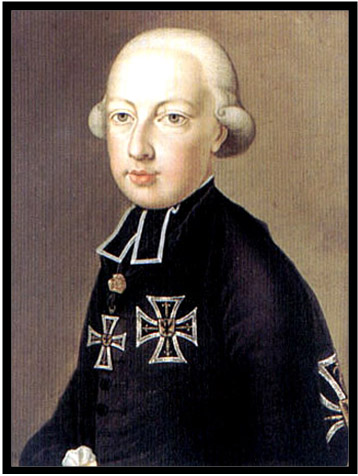
(53) Maximillian Franz
of Austria - 1780-1801.
Maximilian
Francis von Habsburg-Lothringen (8 December 1756 - 26 July 1801) was AN Archbishop of Cologne, the last child of Empress Maria
Theresa of Austria and Francis I, Holy Roman Emperor. His siblings included two Holy Roman Emperors (Joseph II and Leopold
II), as well as Queen Marie Antoinette of France and Queen Maria Carolina of Two Sicilies. He was the last Elector of Cologne
and an early patron of Ludwig van Beethoven. Maximilian Franz was born at the Hofburg Imperial Palace, Austria. In 1780 he
succeeded his uncle Prince Charles Alexander of Lorraine as Hochmeister (Grand Master) of the Teutonic Knights. In 1784 he
became Archbishop-Elector of Cologne, living in the archbishopric's seat at Bonn. He remained in that office until his death,
meaning that he participated as Elector in the election of his brother Leopold II in 1790. In conspiracy theories, such as
the one promoted in The Holy Blood and the Holy Grail, Maximilian Franz was alleged to be the twenty-second Grand Master of
the Priory of Sion, Maximilian Franz succeeded to the title of Elector of Cologne and the related Archbishopric of Münster
and maintained his noble court in Bonn. A keen patron of music, Maximilian Franz maintained a court orchestra where Ludwig
van Beethoven's father was a tenor in the court chapel and played an important role in the early career of Ludwig van Beethoven.
The young Beethoven was an employee in his court's musical establishment, where his grandfather, also named Ludwig van Beethoven,
had been Kapellmeister. The court organist was Christian Gottlob Neefe, who became an early mentor and teacher to Ludwig van
Beethoven. Recognising his young pupil's remarkable gift both as a performer and a composer, Neefe brought Beethoven into
the court, convincing Maximilian Franz to appoint him as assistant organist. Maximilian, too, recognised the extraordinary
abilities of the young Beethoven. In 1787, he gave Beethoven leave to visit Vienna to study with Mozart, a visit cut short
by the illness and death of Beethoven's mother. In 1792, Maximilian again agreed to let Beethoven depart for Vienna in order
to pursue studies with Joseph Haydn, Antonio Salieri and others, where he continued to pay Beethoven's court salary. Maximilian
Franz maintained an interest in Beethoven's progress, and several letters from Haydn to Maximilian detailing his student's
progress remain extant. The Archduke anticipated that Beethoven would return to Bonn and continue working for him, but in
fact Beethoven never returned, choosing to pursue his career in Vienna. Maximilian Franz's political rule over the Archbishopric
met with disaster in 1794, when his domains were overrun by the troops of Revolutionary France. During the Napoleonic Wars,
Cologne and Bonn were both occupied by the French army, in October and November of 1794. As the French approached, Maximilian
left Bonn never to return and the territories eventually passed to France under the terms of the Treaty of Lunéville
(1801). The Archbishop's court was dissolved, and the Archbishopric lost its independence forever, being ruled first by France,
then Prussia; and ultimately becoming part of unified Germany. Plagued by corpulence and ill-health, Maximilian Franz took
up residence in Vienna after the loss of his territories until his death at age 45 in 1801, at Schloss Hetzendorf. He was
the last Elector of Cologne, since his successor, Anthony, Archduke of Austria, was never able to assume the title. (In 1803,
the electorate was secularized altogether.)The dismantling of the court made Beethoven's relocation to Vienna permanent, and
his stipend was terminated. Beethoven planned to dedicate his First Symphony to his former patron, but Maximilian Franz died
before it was completed.
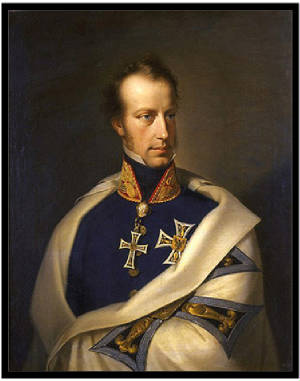
(54) Karl
II of Austria - 1801-1804.
Archduke
Charles of Austria, Duke of Teschen (de: Erzherzog Karl von Österreich, Herzog von Teschen, also known as Karl von Österreich-Teschen)
(Full name: Karl Ludwig Johann Josef Lorenz of Austria) (5 September 1771 - 30 April 1847) was an Austrian field-marshal,
the son of emperor Leopold II and his wife Infanta Maria Luisa of Spain. He was also the younger brother of Francis II, Holy
Roman Emperor. Despite being epileptic, Charles achieved respect both as a commander and as a reformer of the Austrian army.
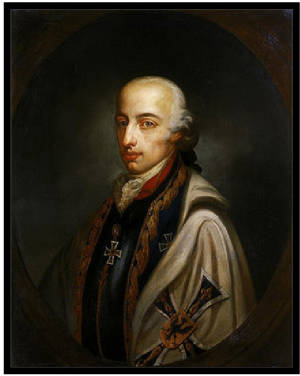
(55) Anton
Viktor of Austria - 1804-1835.
Anton
Victor (31 August 1779 - 2 April 1835) was an Archduke of Austria and a Grand Master of the Teutonic Knights. Anton Victor
was the son of Leopold II, Holy Roman Emperor, and Maria Luisa of Spain. He was born in Florence and died in Vienna. He never
married and died without issue. After the death of Maximilian Franz of Austria, the Archbishop of Cologne and Prince-Bishop
of Münster, Anton Victor was elected on September 9, 1801 as Prince-Bishop of Münster and on October 7 as Archbishop
and Prince-elector of Cologne. Because the French had already occupied both cities, Anton Victor never assumed his powers.
Therefore not Anton Victor but his predecessors are regarded as the last Archbishop of Cologne and Prince-Bishop of Münster.

(56) Maximillian
of Austria-Este - 1835-1863.
Archduke
Maximilian Joseph of Austria-Este (1782-1863), the fourth son of Archduke Ferdinand of Austria-Este and younger brother of
Francis IV, Duke of Modena. He was grand master of the Teutonic Knights from 1835 to 1863. Born in Milan, Maximilian was the son of Archduke Ferdinand of Austria (son of Maria Theresa of Austria and governor of Italy) and Maria Beatrice Ricciarda
d'Este. He spent his youth in Monza, where his family had fled after the French invasion of the Duchy
of Modena. After staying in Verona, Padua, Trieste and Ljubljana, his family moved to Wiener Neustadt. In 1801 he joined
the Teutonic Order, obtaining the Austrian Cross in 1804. After studying in the Collegium Teresianum
of Wiener Neustadt, he was named Major General in the Austrian Army (1805). In 1809 he fought in Germany against the French;
he clashed with the Napoleonic troops at Regensburg, leading his army towards Linz. In 1819 he was elected a Royal Fellow
of the Royal Society. In 1830 Maximilian established himself in the Ebenzweier Castle, near Altmünster
am Traunsee, while from 1831 to 1839 he lived in Linz. In 1835 he was named Grand Master of the Teutonic Order. Maximilian
erected several fortifications in the Austrian possessions in Italy, such as the Torri Massimiliane
of Verona and the Torre Massimiliana of Venice. He died in 1863 in the Ebenzweier castle.
He is buried in Altmünster.
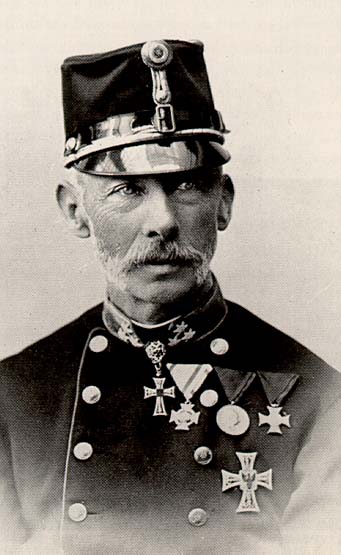
(57) Wilhelm
Franz Karl of Austria - 1863-1894.
Archduke
Wilhelm Franz Karl of Austria-Teschen (German: Erzherzog Wilhelm Franz Karl von Habsburg-Lothringen,
21 April 1827 – 29 April 1894) was an Archduke of Austria from the House of Habsburg. He was born in Vienna as the son
of Archduke Charles, Duke of Teschen (1771–1847) and Princess Henrietta of Nassau-Weilburg (1797–1829). He was
a grandson of Leopold II (1747–1792) and nephew of Franz II (1768–1835), the last two Holy Roman Emperors. He
held the office of Grand Master of the Teutonic Knights from 1863 until his death in 1894.
He gained the rank of Feldzeugmeister in the service of the Austrian Army in January 1867, after commanding the artillery
and being wounded at the Battle of Königgrätz (1866). He was Governor of the Federal Fortress of Mainz. Archduke
Wilhelm of Austria died unmarried and without issue on 29 July 1894 in Weikersdorf after falling from a horse. He had been
riding in Baden when his horse was frightened by a motor car. The horse bolted, and the Archduke was thrown. One of his
feet remained stuck in the stirrup, and he was dragged more than 100 yards. He died without regaining consciousness. His
death was attributed to a concussion on the brain. The archduke was 67 years old.

(58) H.I&R.H. Archduke Eugen Ferdinand Pius Bernhard of Austria - 1894-1923.
Archduke Eugen Ferdinand Pius Bernhard Felix Maria of Austria-Teschen (May 21, 1863
- December 30, 1954) was an Archduke of Austria and a Prince of Hungary and Bohemia. He was the last Grand Master of the Teutonic
Knights from the Habsburg dynasty.Eugen was the son of Karl Ferdinand, Archduke of Austria (son of Archduke Charles, Duke
of Teschen) and of his wife Archduchess Elisabeth Franziska of Austria. He was born at the castle of Gross Seelowitz (Židlochovice),
near Brünn (Brno) in Moravia. At his baptism he was given the names Eugen Ferdinand Pius Bernhard Felix Maria. His education
was Spartan in character. His country living at Gross Seelowitz and holidays at Gmund alternated with a sound education and
strict instruction. At the Albrechtspalais in Vienna, Eugen received instruction in all the military subjects in addition
to languages, music and the history of art. At the age of 14 in keeping with the family tradition and like his elder brother,
he also began his military career with the Tyrolean Kaiserjäger Regiment and was commissioned as a Leutnant on the 27
October 1877. Shortly thereafter he was transferred as an Oberleutnant to a hussar regiment and in the following years participated
in many lengthy manoeuvres. In 1882 Eugen took an examination before a commission assembled by Archduke Albrecht that verified
his suitability to attend the military academy at Wiener Neustadt. Eugen became then the sole archduke to attend the several
year long course at the academy (1883-1885) and subsequently successfully graduated as a fully trained general staff officer.
In 1885 Eugen was assigned to the General Staff and rapidly rose through the ranks . He commanded a battalion of Infantry
Regiment 13 as a lieutenant colonel before assuming command of the entire regiment as a colonel. Following a further regimental
assignment as commanding officer of Hussar regiment 13, he assumed command of an infantry brigade in Olmütz and then
a division in Vienna. In 1900 he was appointed to the command of XIV Army Corps in Innsbruck and promoted to General der Kavallerie
on 27 April 1901. This command simultaneously also made him the commanding general in Innsbruck and the defence commander
for the Tyrol. He was appointed eight years later as an army inspector and senior defence commander for the Tyrol. When in
1909 the possibility of a war against Serbia was in the air he alongside Archduke Franz Ferdinand and General Albori was named
as a presumptive army commander. Eugen also had exercised his influence in the field of personnel. He had urgently recommended
Feldmarschall-Leutnant Conrad von Hötzendorf, his divisional commander at Innsbruck as the successor to the retiring
chief of the general staff - General Beck-Rzikowsky. In 1911 the Archduke retired from active military service ostensibly
for health reasons. Conrad von Hötzendorf however suggested in his memoirs that Archduke Franz Ferdinand had become increasingly
jealous of the importance of Eugen. In addition to his military career above all else, Eugen was called upon to perform his
duty as the Grand Master of the Teutonic Knights. On 11 January 1887, Eugen entered the Teutonic Knights as a professed knight.
At the same time he was chosen to be the coadjutor of his uncle, Archduke Wilhelm, the then Hoch- und Deutschmeister. When
Archduke Wilhelm suddenly died, Eugen was enthroned as the new Hoch- und Deutschmeister on 19 November 1894 and in this office
he also proved himself very effective. He further developed the institution of the volunteer nursing care (Marianer), founded
new hospitals and improved the training of the sisters. Finally he had the central archives of the order in Vienna sorted
out and extended. At the outbreak of the war he immediately reported for active duty. He was however at first palmed off with
a relatively unimportant post as the patron of the voluntary war welfare organization. Finally he was transferred in December
1914 to assume to post of commander of the forces in the Balkans with his headquarters at Peterwardein. Together with his
chief of Staff, Feldmarschall-Leutnant Alfred Krauss, a very talented military theoretician with a decisive and vigorous character,
he reorganized the hard hit 5th army. On 22 May 1915 Eugen was promoted to Generaloberst. Two days later on the 24th of May
he was entrusted with the command of the southwestern front against Italy. He moved his headquarters to Marburg (Maribor)
and now commanded a theatre stretching from the Swiss border to the Adriatic. His main objective here was a pure and simple
defence against the many times numerically superior Italian forces. Only at the beginning was the designation "Southwest
Front Command" clear. From March 1916 it functioned as Heeresgruppen-Kommando Erzherzog Eugen in Tyrol to the exclusion
of the remaining parts of the front and at the beginning of the execution of the 12th battle of the Isonzo as Heeresfront
Erzherzog Eugen with the allied German 14th Army and Heeresgruppe von Boroević under command but Heeresgruppe von Conrad
was not immediately subordinate. During the 1st battle of the Isonzo Eugen traveled back and forth behind the front. He came
to many conferences, appeared in the front lines and encouraged the troops and in this way achieved great popularity. At the
same time he took care of the rear areas in order to guarantee the best possible supply to the forward troops. Before the
great attack from the South Tyrol which took take place in the Spring of 1916 Eugen assumed command as army group commander
of the 11th and 3rd armies and took up headquarters at his cousin's, the Graf von Bozen und Maurer, estate just outside Bozen
(Bolzano). After initial success, the attack had to be broken off in consequence of the danger posed to the Russian front
following the Brussilow offensive of June 1916 and the subsequent transfer of formations to that threatened front. However
after breaking off the offensive, Archduke Eugen successfully withdrew his troops in the second half of June 1916 into secure
positions. In the further course of the war Eugen had to transfer more and more of his troops to the hard fighting Isonzo
Army so that he soon had to manage without reserves in his own theatre of operations. Although he had had only a very limited
forces holding the Tyrolean front he never considered withdrawing further and shortening his line. He was too personally attached
to the land to do that. Eugen was promoted to Field Marshal on 23 November 1916 and in the middle of March 1917 again took
up his work as the commander of the southwest front. During the Caporetto offensive, Eugen was the actual commander employing
his complete energy in the process. He recognized that this was the last favorable opportunity for the central powers. The
Archduke, who normally was no great flayer of the soldiers could on this occasion not push hard enough. There appeared temporarily
to be great confusion in the issuing of orders. It is possible that many blamed Eugen and his staff for this. Against the
will of the chief of the general staff, Generaloberst Baron Arz, the Emperor Karl released Eugen from active service on 18
December 1917. The southwestern front command was terminated. The relief of Eugen does not appear to been made for personal
but on objective reasons. After Russia's withdrawal from the war and the shortening of various other fronts (Isonzo, Carinthia,
Dolomites), the senior generals pushed at the Piave. With his very senior rank, Eugen could only be a commander in chief.
But as the Emperor Karl himself took up the supreme command Eugen had to go. Eugen still enjoyed high renown and at the end
of the war at the beginning of November 1918, the idea of Eugen becoming a regent was introduced. The last foreign minister
Graf Andrassy and the member of parliament Dr. Franz Dinghofer of the German nationalist party had discussed this. However,
Eugen would never have accepted such an offer without the consent of the emperor. Following the collapse of the monarchy Eugen
first settled in Lucerne and then at Basle where he lived modestly in a hotel from 1918 to 1934. In order to safeguard the
existence of the Teutonic Order , Eugen voluntarily resigned his position as the Hoch- und Deutschmeister in 1923. He had
been the 58 secular grand master of the order. In this way the possessions of the order were saved. In 1934 Eugen settled
at the order's convent at Gumpoldskirchen near Vienna. He participated at monarchical rallies, attended veterans' meetings
and placed himself again at the service of the dynasty even though he himself no longer believed in the restoration. Following
the Anschluß of Austria to Germany in 1938 the German Order was dissolved and its possessions confiscated. Eugen received,
probably with the intervention of Hermann Göring and other senior military figures a rented house at Hietzing where he
survived the 2nd World War. In 1945 he fled to the Tyrol where he received through the French occupying power a small rented
villa at Igls. On 21 May 1953 the whole of Innsbruck celebrated the field marshal's 90th birthday. Eugen died on 30 December
1954 at Merano surrounded by the brothers of his order from Lana. On 6 January 1955 he was buried in the St. Jakobskirche
at Innsbruck next to Archduke Maximilian III (1558-1619).
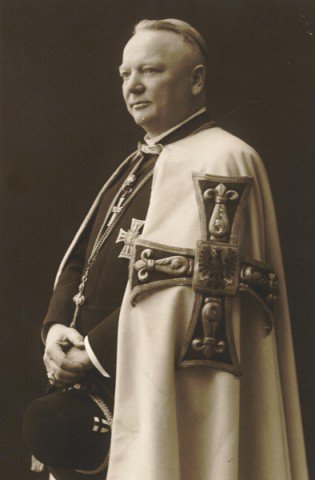
(59) Chivalric and (1) Clerical
- Dr. Norbert Klein - 1923-29,
1st Clerical, 1929-1933. The Teutonic Order ceased to be a Chivalric Order of Knighthood in November 1929 when His
Holiness Pope Pius XI, formally ratified the Orders new constitution making the Teutonic Order a Clerical Order, and as such
Dr.Norbet Klein held the Chivalric Grand Mastership as the 59th Hochmeister from 1923-1929, from 1929-1933 the Orders
1st Clerical Grand Master - Hochmeister.
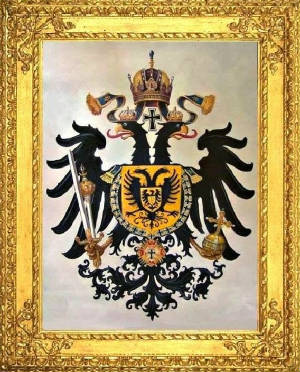
The Chivalric Arm of the
Teutonic Order
(60) Chivalric
- H.I.&.R.H Prince Karl Friedrich of Germany - 2002-
His Imperial and Royal Highness Prince Karl Friedrich of Germany formally revived the
Order of the Teutonic Knights back into a Chivalric Order of Knighthood thus making a separate Teutonic Arm of the Order from
the Clerical Papal Arm of the Order in Rome, by Imperial Decree on Christmas Day, 2001 and assumed the Grand Mastership of
the Teutonic Order - Deutscher Orden - German Order on the 1st of January, 2002, as the 60th Chivalric Hoch-und-Deutschmeister
of the Teutonic Order of the Knights of St Marys Hospital in Jerusalem. The administrative seat for the Chivalric Arm of the Teutonic Order moved back to Mergentheim Castle at Bad Mergentheim in Franconia, Germany in 2002 under the instruction
and decree of His Imperial and Royal Highness Prince Karl Friedrich
of Germany.

The Clerical Arm
of the Teutonic Order
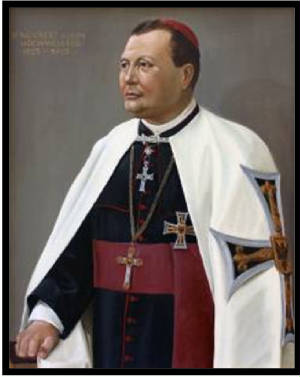
1st Clerical - 59th Chivalric -
Dr. Norbert Klein - 1929-1933.
Norbert Klein (25 October 1866 in Brunzeif, Austrian Silesia –
10 March 1933 in Bruntál, Czechoslovakia) was Bishop of Brno from 1916 to 1926 and 59th Chivalric and 1st
Clerical Grand Master of the Teutonic Order from 1923 to 1933. Klein began his theological studies in 1885 at Olmütz. He continued for two years before entering the novitiate of the Teutonic Order in 1887. On 27 July 1890
he was ordained to the priesthood and in 1892 he made his solemn profession in the order. In 1903 he was named
Prior of Troppau. On 7 December 1916
he was appointed to be Bishop of Brno. On 28 January 1917 he was ordained bishop. On
30 April 1923 he became the 59th Chivalric and
1st Clerical Grand Master of the Teutonic Order when Archduke Eugen
of Austria resigned in order to ensure that the order retained its properties
in Austria and Czechoslovakia which were threatened with confiscation by the respective governments.
On 4 January 1926 Klein resigned as Bishop of Brno and was named Titular Bishop of Syene. Klein died in 1933 and is buried in Bruntál.
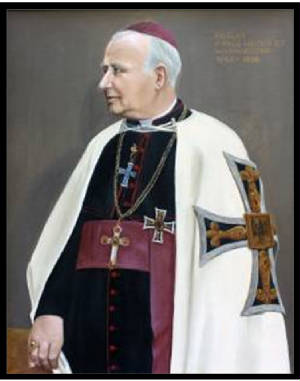
2nd Clerical - Paul Heider
- 1933-1936.
Pater Paul Heider
2nd Clerical Hochmeister of the Teutonic Order (* 21. Juni 1868 in Adamsthal in Mähren; † 25. Januar
1936 in Troppau, Mährisch-Schlesien, Tschechoslowakei) war ein Theologe und zwischen 1933 und 1936 Hochmeister
des Deutschen Ordens. Als Alois Heider geboren, stammte er aus einfachsten Verhältnissen und besuchte die
Volksschule in Engelsberg, wo er die Förderung eines Priesters aus dem Deutschen Orden erfuhr. Dieser ermöglichte
ihm den Besuch des Untergymnasiums in Freudenthal. 1884 trat er in das erzbischöfliche Knabenseminar in Kremsier
ein. 1886 trat er in das Noviziat des Deutschen Ordens ein und wählte den Ordensnamen Paul. 1889 legte er
die beste Reifeprüfung im Land Mähren ab. Nach theologischen Studien an der Universität Innsbruck wurde
er am 26. Juli 1892 zum Priester geweiht. Nach Kaplansjahren im Altvatergebirge kam er 1896 nach Freudenthal, wo
er auch Präses des Gesellenvereins war. Unter seiner Leitung wurde hier das Vereinshaus des katholischen Gesellenvereins
vollendet und 1899 eingeweiht. Nach drei Jahren als Pfarrer von Würbenthal kehrte er 1909 nach Freudenthal
zurück, wo er Pfarrer und Dechant des Dekanates Freudenthal wurde. Im November 1916 folgte er dem zum Bischof
von Brünn ernannten Norbert Johann Klein als Propst der Maria-Himmelfahrt-Kirche von Troppau. Nach dem Ersten
Weltkrieg engagierte Heider sich politisch in verschiedenen Institutionen, für die Deutsche Christlich-Soziale
Volkspartei und für die in Troppau und später in Jägerndorf erscheinenden katholischen Zeitungen
Das Volk und Deutsches Wochenblatt. Im Ergebnis des Ersten Weltkrieges wurden in der neu entstandenen Tschechoslowakischen
Republik die zuvor zweisprachigen Lehranstalten getrennt und überwiegend zu rein tschechischen Einrichtungen.
Dadurch stand den deutschen Seminaristen auch das Seminar in Kremsier nicht mehr offen. Heider, der sich schon
früher vergeblich um die Errichtung eines Internats für das Gymnasium in Freudenthal bemüht hatte,
setzte sich nun für die Errichtung eines deutschen Knabenseminars am gleichen Ort ein. Eine Lotterie, ein
Benefiztheaterstück des Heimatschriftstellers Viktor Heeger und eine Baugrundschenkung des Deutschen Ordens
trugen zur Finanzierung bei. Vor der Einweihung im August 1926 kam es zu einem Konflikt zwischen dem Bauverein
unter Heiders Leitung und dem Olmützer Erzbischof Leopold Prečan, in dem Bischof Norbert Klein vermittelte.
Während seiner Zeit als Propst wurden ihm die für Ordensleute ungewöhnlichen Titel eines Monsignore
und Päpstlichen Ehrenprälaten verliehen Am 31. Mai 1933 wurde Paul Heider vom Ordenskapitel einstimmig
als Nachfolger des verstorbenen Norbert Klein zum Hochmeister gewählt. Am 17. Oktober 1933 spendete ihm der
Olmützer Weihbischof Josef Schinzel die Benediktion. Als Hochmeister residierte Paul Heider in Freudenthal
und setzte sich unter anderem für die Seligsprechung von Peter Rigler ein, ebenso wie für die Ausbildung
von Laien innerhalb des Ordens. Nach seinem Tod am Fest Pauli Bekehrung 1936 wurde er im Freudenthaler Hochmeistergrab
neben seinem Vorgänger beigesetzt.
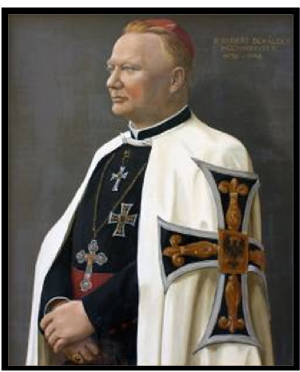
3rd Clerical - Robert
Schalzky - 1936-1948.
Robert Johann Schälzky, 3rd Clerical Hochmeister of the Teutonic Order (* 13. August 1882 in Braunseifen,
Mähren; † 27. Januar 1948 in Lana, Südtirol) war Theologe und zwischen 1936 und 1948 Hochmeister
des Deutschen Ordens. Schälzky war der Neffe des Hochmeisters Norbert Klein und der Sohn eines Landbriefträgers
mit neun Kindern. Nachdem er 1902 in Troppau das Abitur bestanden hatte, trat er dort in den Konvent des Deutschen
Ordens ein, wo er am 15. September 1903 auch seine ersten Gelübde ablegte. Die theologischen Studien in Brixen
absolvierend, legte er am 15. September 1906 die feierlichen Gelübde ab und wurde am 29. Juni 1907 im Dom
zu Brixen zum Priester geweiht. Nach einem kurzen Einsatz als Kooperator und Katecheten in Freudenthal, übernahm
er in Freudenthal die Stelle eines Religionslehrers. Seit 1912 Gemeinderat in Freudenthal und 1913 erstmals als
Referent des Verbandstages der Christlichsozialen Partei in Troppau auftretend, war er seit 1918 im Vorstand der
Deutschen Christlichen Volkspartei tätig, von welcher er am 8. Dezember 1918 in Olmütz auch zum Landesobmann
gewählt wurde. Hierzu wurde er 1920 auch stellvertretender Parteivorsitzender. Von 1919 bis 1921 Vizebürgermeister
von Freudenthal, wurde er 1919 auch Abgeordneter der Schlesischen Landesversammlung. Von 1920 bis 1925 war er vornehmlich
als Abgeordneter des Prager Parlamentes tätig, wobei seine Bemühungen vor allem im Gebiet der Sozialpolitik
lagen. Seit Herbst 1924 Obmann der "Deutschen Hauptstelle für Wohnungs- und Siedlungsfürsorge in
der Tschechoslowakei", musste er nach auch der Auflösung des Parlamentes (1925) nicht nur sein Abgeordnetenmandat
niederlegen, sondern aufgrund der Untersagung jeglicher politischer Tätigkeiten durch den Vatikan, seine
politische Arbeit aufgeben. Nun in der Satzungskommission des Ordens tätig, lebte er seit Februar 1926 in
Wien. Am 5. Februar 1927 zum Präsidenten des Volksbundes Deutscher Katholiken gewählt, wurde er im Februar
1928 Religionsinspektor für deutsche Bürgerschulen in Mähren-Schlesien. Am 1. September 1929 zum
Pfarrer und Dechanten in Freudenthal ernannt, wurde er zudem 1930 Generalökonom und Spitler des Deutschen
Ordens. Das Generalkapitel des Jahres 1932 wählte ihn zudem zum Generalrat. Nach mehreren Wahlgängen
wurde Schälzky, mit einer sehr knappen Mehrheit, am 24. März 1936 in Wien zum Hochmeister des Deutschen
Ordens gewählt. Enttäuscht über die knappe Stimmenmehrheit, nahm er das Amt erst nach Zureden Marian
Tumlers an, wurde am 25. März inthronisiert und am 29. März von Kardinal Innitzer zum Abt benediziert.
Im Rahmen von Visitationen stellte Schälzky binnen kurzer Zeit ein enges persönliches Verhältnis
zu den verschiedenen Provinzen des Ordens her. Diese waren unter seinen beiden Vorgängern fast gänzlich abgerissen.
Auch bemühte er sich um die Verwaltung und eine Ertragssteigerung und Modernisierung der ordenseigenen Sozialeinrichtungen.
Jedoch wurde sein Wirken durch die Nationalsozialisten unterbrochen, die den Orden 1938 enteignete. Proteste fruchteten
erst 1940 und Kirchenminister Hanns Kerrl bemühte sich persönlich um die Annullierung der Enteignungen.
Doch scheiterte er an Bormann und Gauleiter Henlein, der das Enteignungsdekret unterzeichnet hatte. Während
der Lebensunterhalt der Ordenspriester durch bischöflich besoldete Seelsorgsstellen sichergestellt wurde,
erhielt Schälzky eine kleine Rente der Gauforstverwaltung Reichenberg. Als die Amtszeit des Hochmeisters
1942 abgelaufen war, verlängerte Papst Pius XII. diese, da ein Generalkapitel aufgrund des Krieges nicht
möglich war. Nachdem er bereits 1939 das Schloss Freudenthal hatte räumen müssen und im Forsthaus
Wiedergrün wohnte, siedelte er wenig später in die Kommende Troppau über. Im Frühjahr 1945
nach Marktlangendorf geflohen, kehrte er 1945, unterwegs ausgeraubt, 1945 zu Fuß nach Freudenthal bzw. Troppau
zurück. Ohne Vorwürfe in Troppau interniert, folgte der gesundheitlich schwer angegriffene Hochmeister
auf einem offenen Lastwagen seinen abgeschobenen Ordensbrüdern kurz darauf nach Wien. Hier brachten seinen
Lebensunterhalt vor allem alte Freunde auf. Trotzdem konnte er einen notwendigen Krankenhausaufenthalt nicht bezahlen
und begab sich zu einer Visitation nach Lana/Südtirol. Hier starb er dann im Januar 1948.
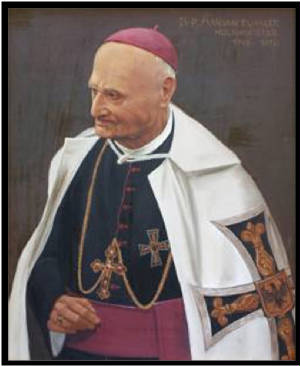
4th Clerical - Dr. Marian
Tumler - 1948-1970.
Marian
Joseph Tumler, 4th Clerical Hochmeister of the Teutonic Order (* 21. Oktober 1887 bei Schlanders; † 18.
November 1987 in Wien) war ein österreichischer Theologe und zwischen 1948 und 1970 der Hochmeister des Deutschen
Ordens. Joseph Tumler wurde auf dem seit über einem Jahrhundert im Besitz der Familie befindlichen Hof „Kopf
am Egg“ in Nördersberg bei Schlanders in Südtirol geboren. Seit 1889 das Johanneum in Bozen besuchend,
trat er 1903 in den Deutschen Orden ein, wo er am 8. Dezember 1904 als Frater Marian die einfachen und am 14.
September 1909 die ewigen Gelübde ablegte. Nachdem er in Bozen das Studium der Theologie absolviert hatte,
weihte ihn Fürstbischof Dr. Josef Altenweisel am 29. Juni 1910 in der Propsteikirche Bozen zum Priester. Von
1915 bis 1916 als Kooperator in Sarnthein wirkend, studierte er 1916/17 in Innsbruck Geographie und Geschichte.
Doch musste er sein Studium unterbrechen und lehrte von 1918 bis 1920 am Gymnasium der Englischen Fräulein
in Meran Geschichte, Religion und Geographie. Nachdem er 1920/21 sein Studium erneut in Innsbruck aufnahm, promovierte
er am 11. März 1922. 1923 als Vikar nach St. Elisabeth (Altar der Kommende Wien) nach Wien berufen, wurde
er zweiter Archivar des Ordens und am 1. Februar 1925 Prosynodalrichter des Metropolitangerichts der Erzdiözese
Wien. Von 1927 bis 1931 war er auch am kirchlichen Ehegericht der Apostolischen Administratur Burgenland tätig.
Nachdem er im Orden am 29. Mai 1925 zum Großkapitular gewählt worden war, gelangte er 1930 durch die
Wahl des Generalkapitels zum zweiten Generalrat und 1933 zum ersten Generalrat. Hiermit war er der Stellvertreter des
Hochmeisters. Am 11. Januar 1933 übernahm er die Leitung des Ordensarchivs und wurde am 30. April 1938 durch
den Hochmeister außerdem zum stellvertretenden Landkomtur von Österreich ernannt. Im Archiv leistete
Tumler eine enorme Arbeit. Er ordnete und registrierte nicht weniger als 12.000 Urkunden und stellte 1938 eine
Arbeit über den Deutschen Orden bis 1400 fertig, welche jedoch, bedingt durch den Krieg, erst 1955 veröffentlicht
werden konnte. Seit Ende 1938 hatte Tumler verschiedene seelsorgliche Positionen inne, bis er 1943 die Vertretung
des Spitalkaplans von Friesach übernahm. Als der Hochmeister nach dem Zweiten Weltkrieg weitgehend handlungsunfähig
war, ruhte die Verantwortung auf ihm. So erreichte er 1947 die Rückgabe des österreichischen Ordensbesitzes,
zu welchem auch Archiv und Schatzkammer gehörten. Nach dem Tode des Hochmeisters als Generalvikar amtierend,
wurde er am 10. Mai 1948 in Lana selbst zum Hochmeister gewählt. Bereits zwei Tage später erhielt er
die Abtsbenediktion. Die Hochmeisterjahre Tumlers waren Aufbaujahre. Gestaltete sich der Aufbau in Osteuropa auch
als besonderes Problem, so konnte doch 1949 ein Brüderkonvent in Darmstadt errichtet und damit der Grundstein
zur Deutschen Brüderprovinz gelegt werden. Tumler gehörte auch zu den Ordensoberen, welche am 2. Vatikanischen
Konzil teilnahmen. Im Versuch, den Orden zeitgemäß zu gestalten, folgte er dem Aufruf des Papstes und
gründete 1963 eine Missionsstation in Schweden. Bereits 1965 gelang ihm die Anerkennung des Familiareninstitutes,
welchem nun bedeutende Persönlichkeiten wie Konrad Adenauer beitraten. Nachdem er seine Ordensgemeinschaft
durch die stürmische Zeit des Konzils und der Nachkonzilszeit geführt hatte, trat er am 6. Oktober 1970
zurück. Die folgenden 17 Jahre seines Lebens verlebte er als Pater Marian in Wien, wo er am 18. November 1987
verstarb. Marian Tumler - Hochmeister of the Teutonic Order - Marian Tumler (21 October 1887 – 18 November
1987) was an Austrian theologian who served as the 62nd Grand Master of the Teutonic Order from 1948–1970.
He was born in Schlanders (now South Tyrol) in what was then the Tyrol and died in Vienna.
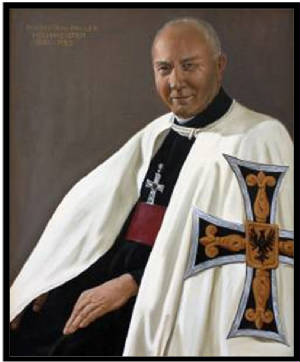
5th Clerical - Ildefons
Pauler - 1970-1988.
Ildefons
Pauler OT, 5th Clerical Hochmeister of the Teutonic Order (* 9. November 1903 in Hirschdorf (Jelenice), Österreichisch
Schlesien; † 9. Januar 1996 in Wien) war zwischen 1970 und 1988 der Hochmeister des Deutschen Ordens. Er
gilt als Gründer und Pionier des kirchlichen Lebens in Burgwald. Ildefons Pauler, Taufname Alois, trat 1927
in Troppau in den Deutschen Orden ein und wurde nach dem Theologiestudium am 26. Juli 1931 in Innsbruck zum Priester
geweiht. Im Zweiten Weltkrieg wurde er als Wehrmachtspfarrer eingesetzt und wurde nach Kriegsende wie viele andere
schlesische Deutschordenspriester vertrieben. In Deutschland angekommen, bemühte er sich, die zerstreuten
Mitbrüder zu sammeln, und gründete in Darmstadt die deutsche Brüderprovinz, zu deren erstem Prior
er 1948 bestellt wurde. Gleichzeitig betreute er als Pfarrer mehrere Diasporagemeinden und baute Kirchen in Industriehof-Burgwald
und Ernsthausen. 1963 zog er als Pfarrer der Deutschordenskommende Sachsenhausen nach Frankfurt. 1965 wurde auch
der Provinzsitz dorthin verlegt. Am 6. Oktober 1970 auf dem Generalkapitel in Lana (Südtirol) zum Hochmeister
gewählt und 1971 in Rom benediziert, stand er dem Orden 18 Jahre lang vor. In seine Amtszeit fiel die Erneuerung
der Ordensregeln nach den Richtlinien des Zweiten Vatikanischen Konzils und deren Anpassung an das neue Kirchenrecht.
Nach seinem Rücktritt 1988 lebte er zunächst in Wien, später im Alten- und Pflegeheim der Deutschordensschwestern
in Bad Alexandersbad. Dort ist er auch begraben. Ildefons Pauler - Hochmeister of the Teutonic Order - Ildefons
Pauler (9 November 1903 – 9 January 1996) was the 63rd Grand Master of the Teutonic Order from 1970 to 1988.
He was born in Opava, Austrian Silesia and died in Vienna.
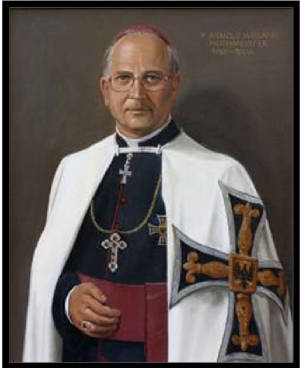
6th Clerical - Dr. Arnold
Othmar Wieland - 1988-2000.
Arnold
Othmar Wieland, 6th Clerical Hochmeister of the Teutonic Order (* 1. August 1940 in Lengmoos, Südtirol) ist
ein Theologe und war Hochmeister des Deutschen Ordens von 1988 bis 2000. Nach dem Abitur trat Othmar Wieland am
5. Oktober 1959 in den Deutschen Orden ein, wo er den Ordensnamen Arnold erhielt. Nachdem er am 6. Oktober 1960
die einfache Profess abgelegt hatte, begann er das Studium der Theologie und wurde am 29. Juni 1966 zum Priester
geweiht, nachdem er bereits am 28. Dezember 1965 die ewige Profess abgelegt hatte. 1969 wurde er mit einer Arbeit
über Justin an der Universität Innsbruck promoviert. Der Provinz Südtirol angehörend und hier
auch verschiedene Aufgaben in der Seelsorge tätigend, wurde er am 29. August 1988 zum 64. Hochmeister des
Deutschen Ordens gewählt und wurde am 30. Oktober 1988 vom Bischof von Bozen-Brixen Wilhelm Egger in Lana
zum Abt geweiht. Am 29. Oktober 1994 wurde er als Hochmeister wiedergewählt. Auf dem Generalkapitel des Ordens
von 2000 nicht mehr wiedergewählt, verlor er auch das Recht auf Gebrauch der Pontifikalien und trat nun in die
Reihe der einfachen Ordensmitglieder zurück. Nachdem er noch einige Jahre in Wien verblieben war, kehrte er in
seine Heimatprovinz zurück, wo er nun erneut in der Seelsorge tätig ist. Seit 2003 ist er Hochschulseelsorger
an der Freien Universität Bozen. Seit 1997 ist Arnold Othmar Wieland Ehrenmitglied der K.A.V. Capitolina Rom
im CV. Abt Dr. Arnold Wieland - Hochmeister of the Teutonic Order - Arnold Othmar Wieland (born 1 August 1940)
is a German theologian. Born in Lengmoos, Ritten, Italy, he was the 64th Grand Master of the Teutonic Knights
from 1988-2000.

7th Clerical - Dr
Bruno Platter - 2000-2018.
Bruno Platter (born 21 March 1944) is a Roman Catholic priest and the 7th Clerical Grand
Master of the Teutonic Order. Platter was born in Ritten in South Tyrol, Italy. He made first profession in the
Teutonic Order on 12 September 1964 and final profession on 15 September 1969. On 29 June 1970, he was ordained
to the priesthood. Platter was first to the Priory of South Tyrol where he worked in the order's school in Bolzano.
In 1973, he received the degree Doctor of Theology from the University of Innsbruck; his dissertation was entitled
Die Begründung des Mischehenverbotes: eine theologie- und rechtsgeschichtliche Untersuchung (The Justification
for the Prohibition of Mixed Marriages: A Theological and Legal-Historical Study). In 1974, he was named Rector
of the Church of St. George in Weggenstein, the order's commandery in Bolzano. On 26 August 2000, Platter was elected
Grand Master of the Teutonic Order at the general chapter in Lana, South Tyrol. On 29 October 2000, he received
his abbatial blessing from Dr. Wilhelm Egger, Bishop of Bolzano-Brixen. On 24 August 2006, he was re-elected
as grand master at the general chapter in Vienna. In July 2010, he was a guest of the President of Poland at the 600th
anniversary of the Battle of Grunwald.
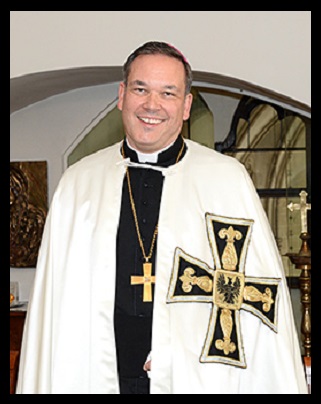
8th
Clerical - Frank Bayard - 2018-
Frank Bayard (born 11 Ocotber 1971)
is a Roman Catholic priest and the 8th Clerical Grand Master of the Teutonic Order, born in Püttlingen, Saarland. Frank Bayard studierte nach einer Lehre als Bankkaufmann bei der Deutschen Bank
Betriebswirtschaft und Europäische Wirtschaft an der Wissenschaftlichen Hochschule
Lahr (WHL) mit Abschluss als Master
of Business Administration. Im Jahr 2000
trat Bayard in den Deutschen Orden ein, legte am 19. September 2004 die ewige
Profess ab und studierte von 2001
bis 2008 Philosophie, Katholische Theologie, Geschichte und Gesundheitsmanagement in Innsbruck und Wien. Am 22. Juli 2006 empfing er in der Stiftskirche Weyarn durch den Erzbischof von München und Freising, Friedrich Kardinal Wetter das Sakrament der Priesterweihe. Seit 2015 war er
Substitut der Pfarre Gumpoldskirchen in der Erzdiözese Wien. 2006
wurde er als Generalrat der deutschen Brüderprovinz in die Generalleitung des Deutschen Ordens gewählt.
Von 2008 bis 2018 war er Generalökonom des Ordens. Am 22. August 2018 wurde Frank Bayard beim Generalkapitel des Deutschen Ordens in Wien als Nachfolger Bruno Platters für sechs Jahre zum Generalabt und Hochmeister des Ordens gewählt und sofort in sein Amt eingesetzt. Die Abtsbenediktion erteilte ihm der Erzbischof von Wien, Christoph Kardinal Schönborn
am 17. November desselben Jahres im Wiener Stephansdom.
